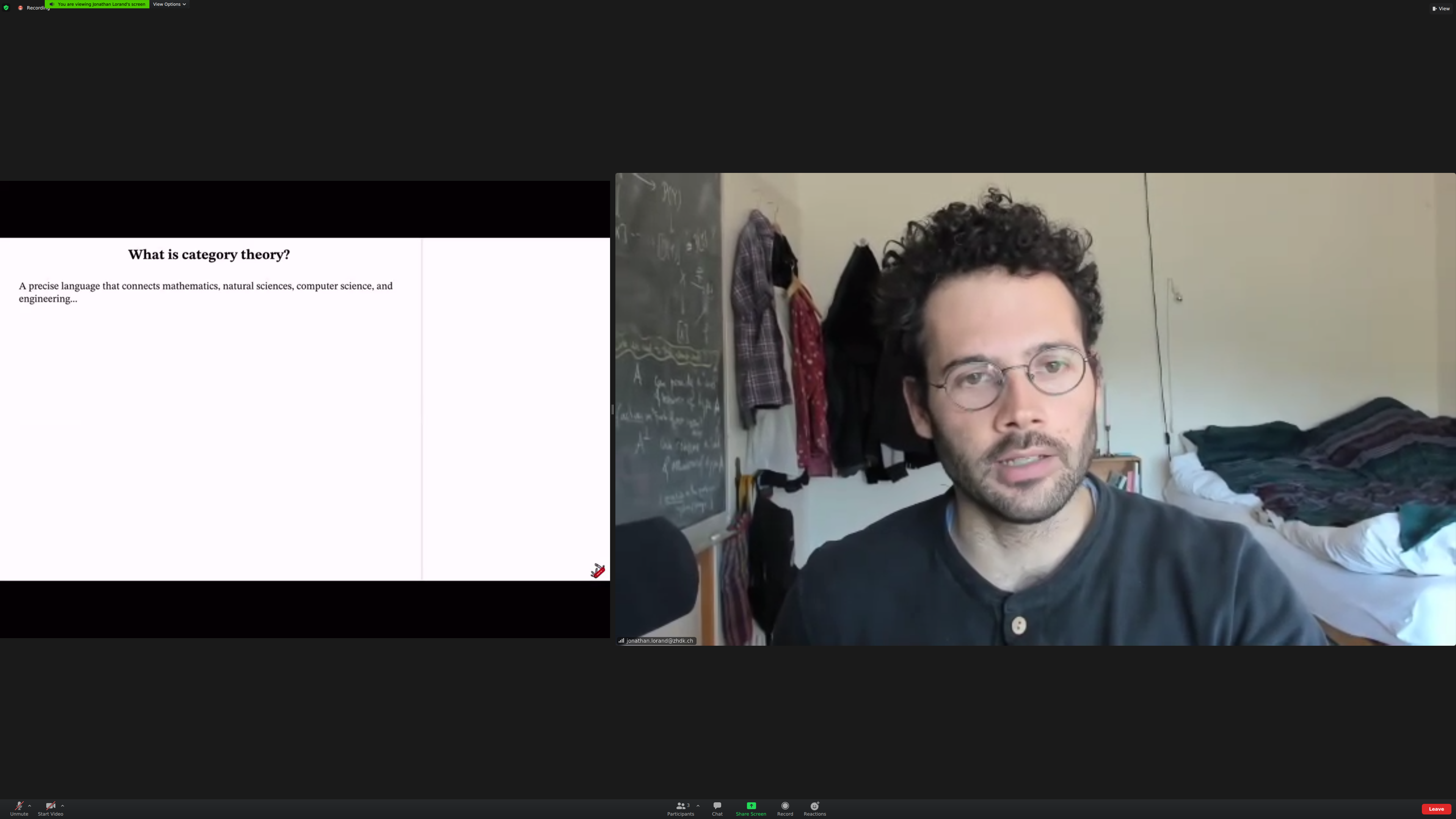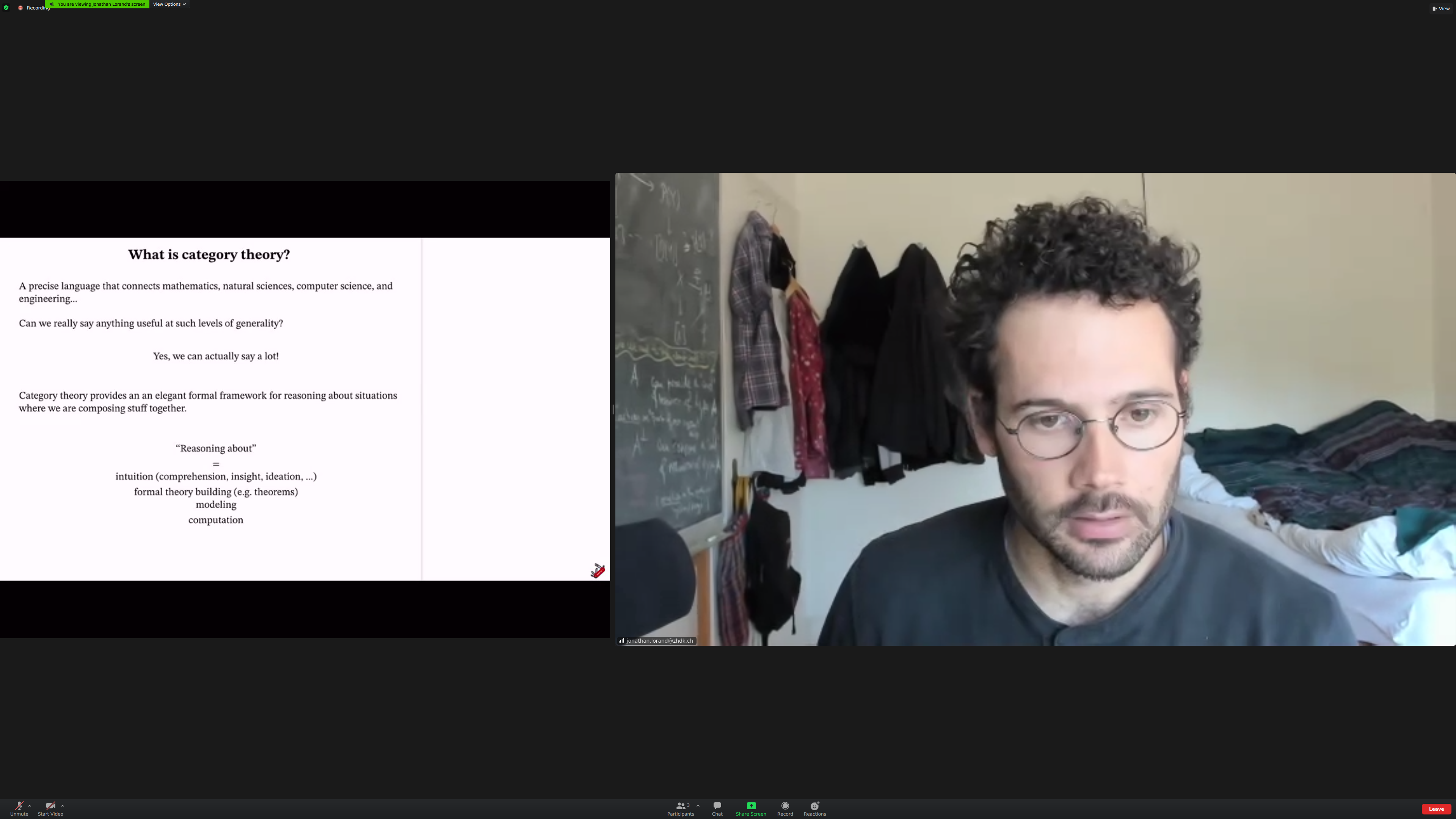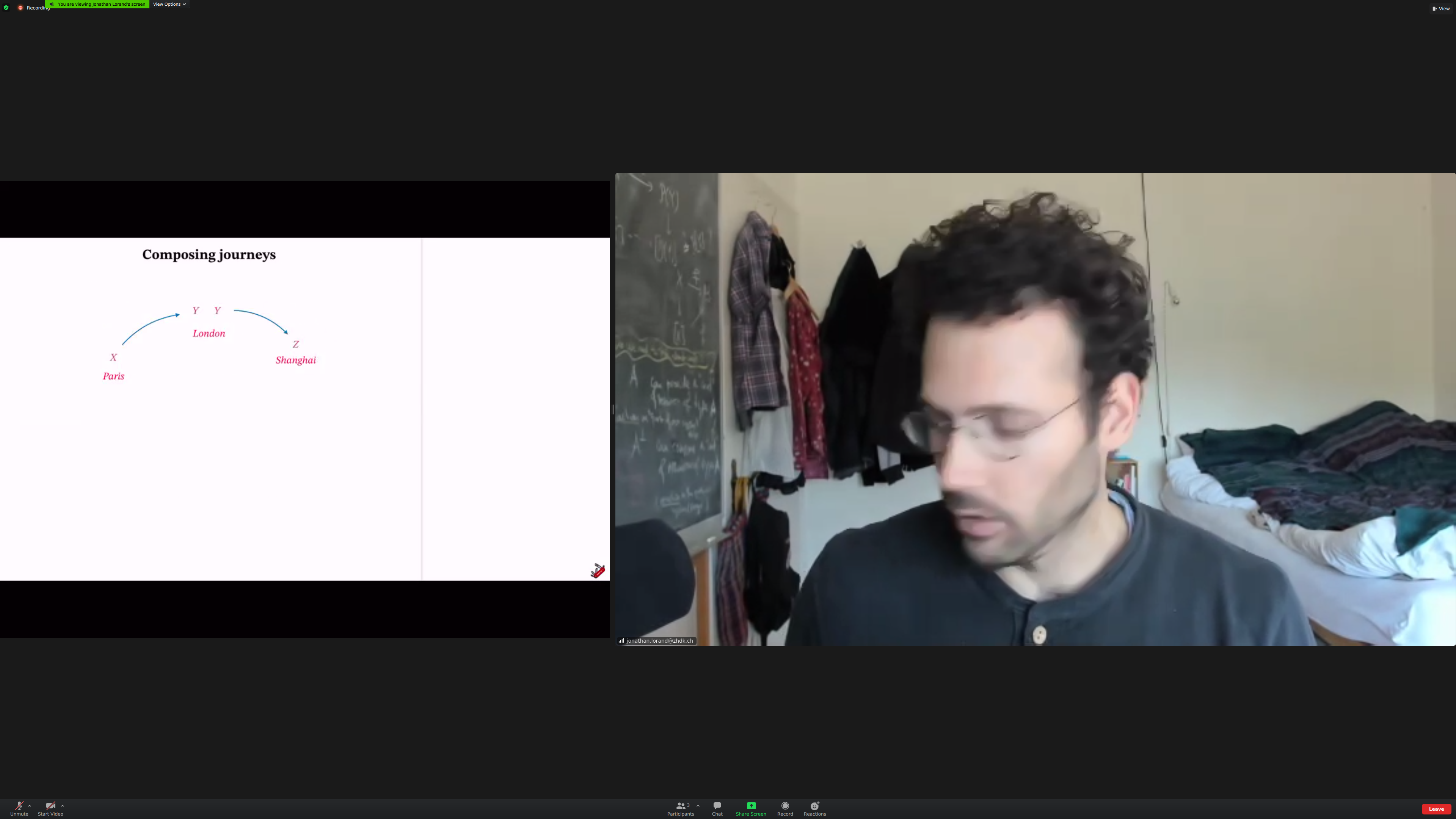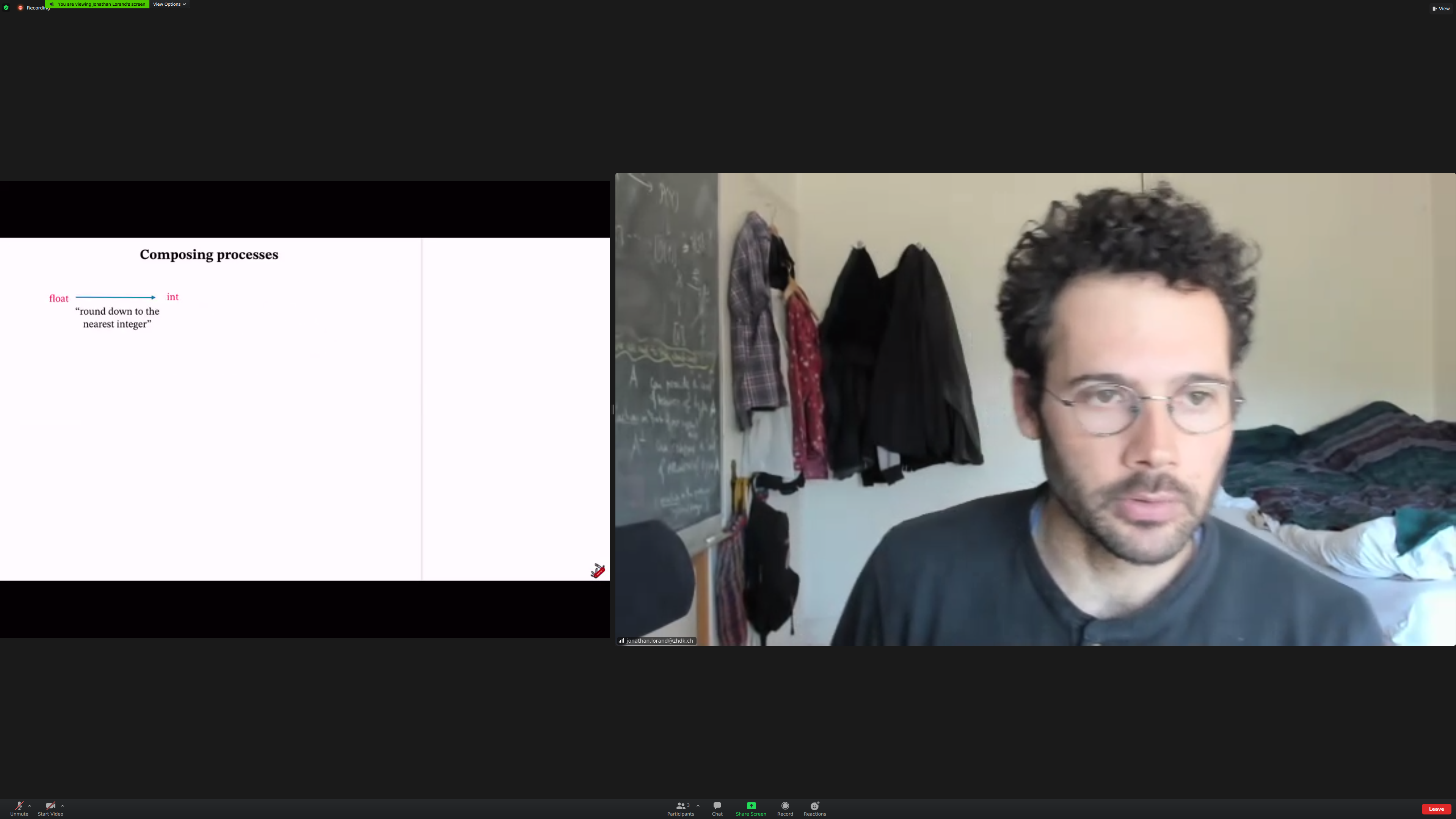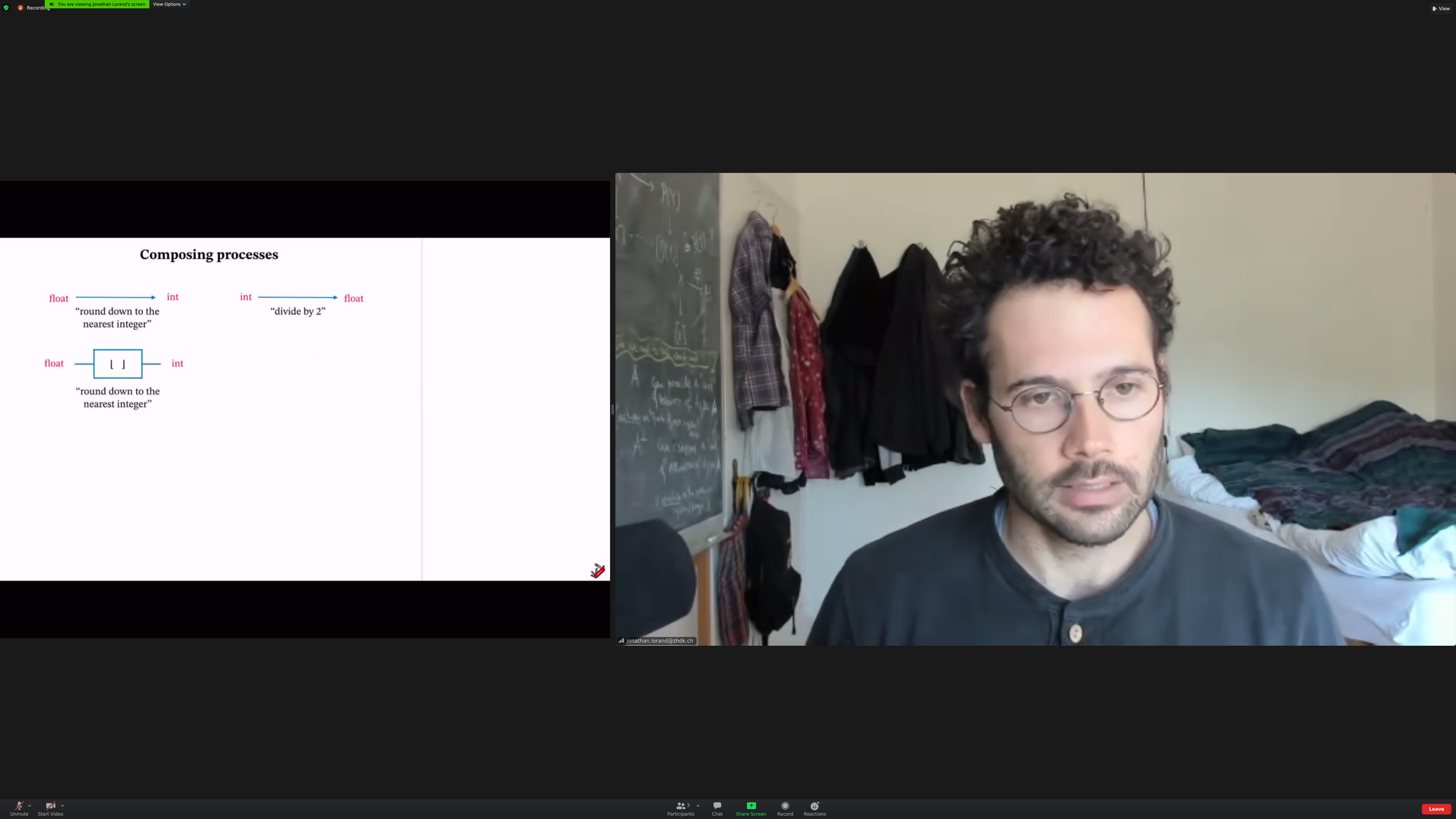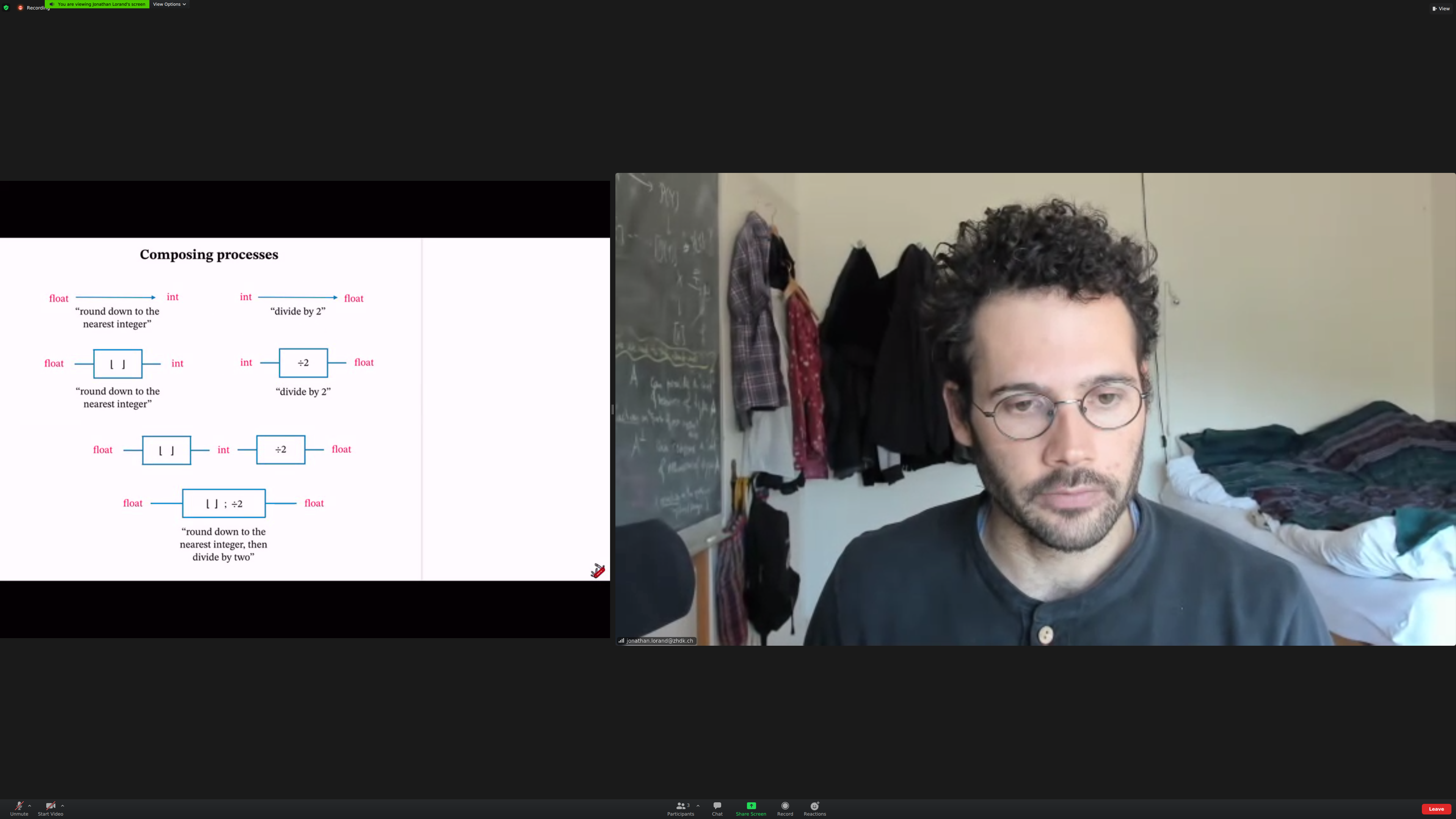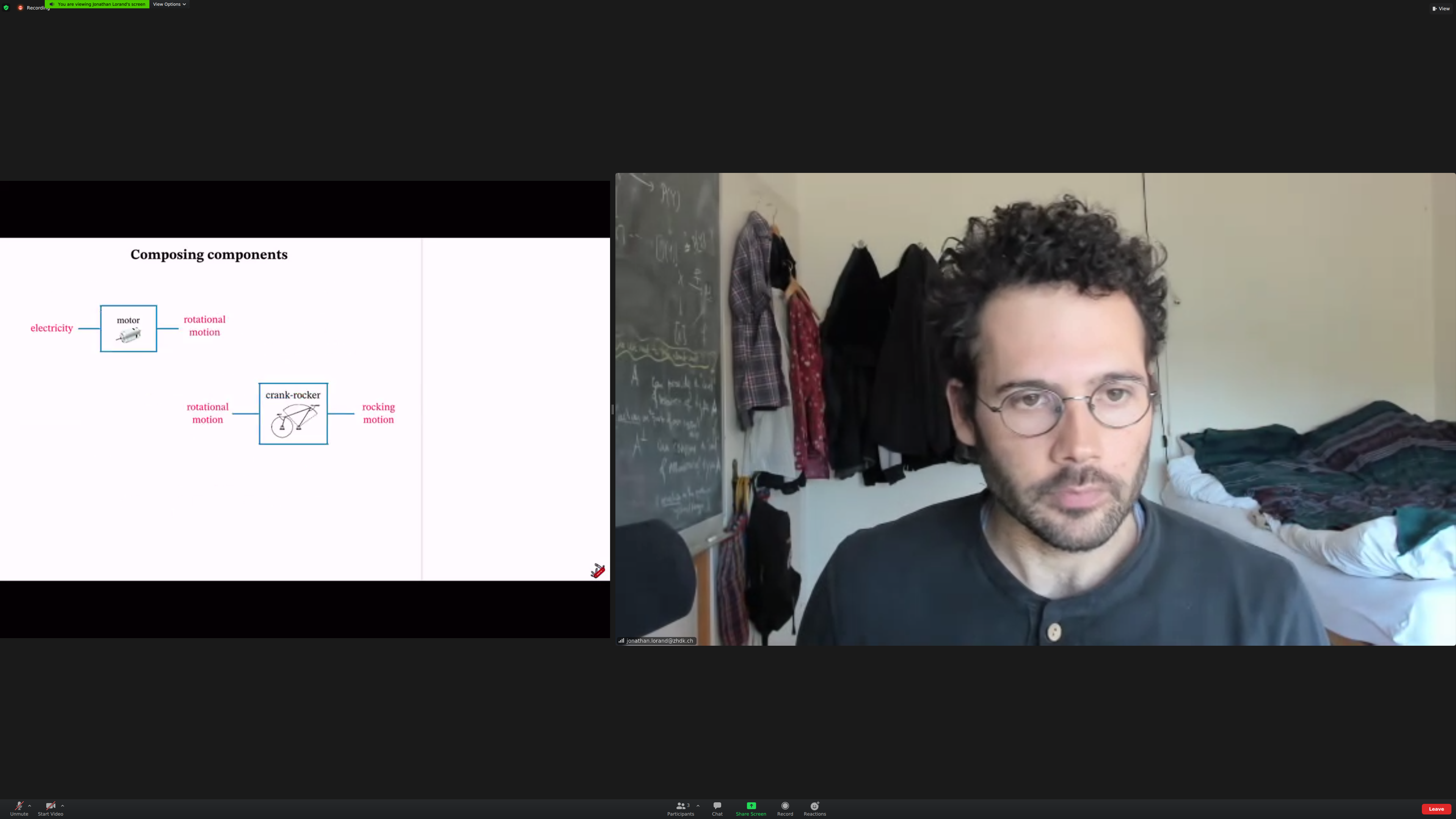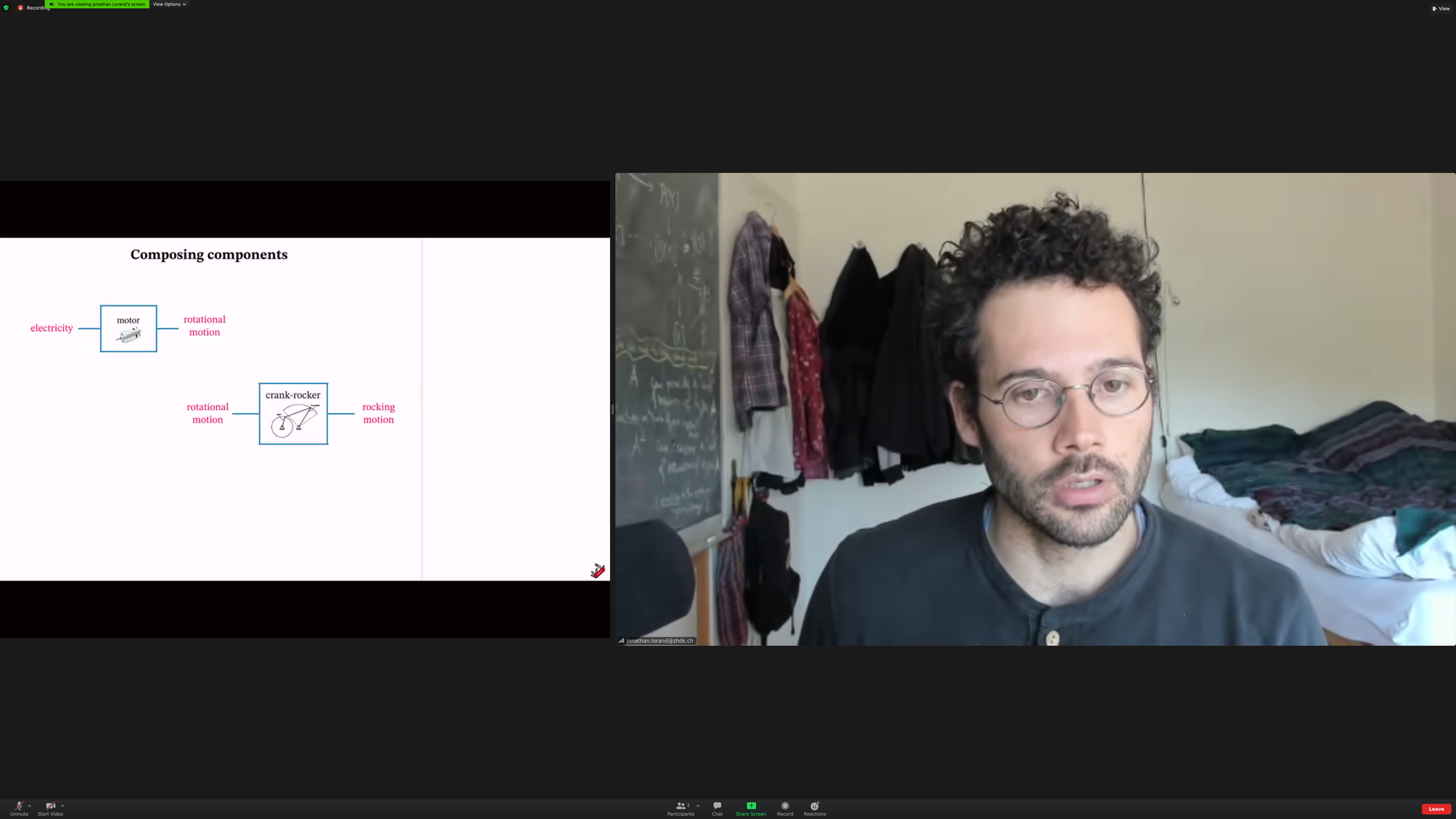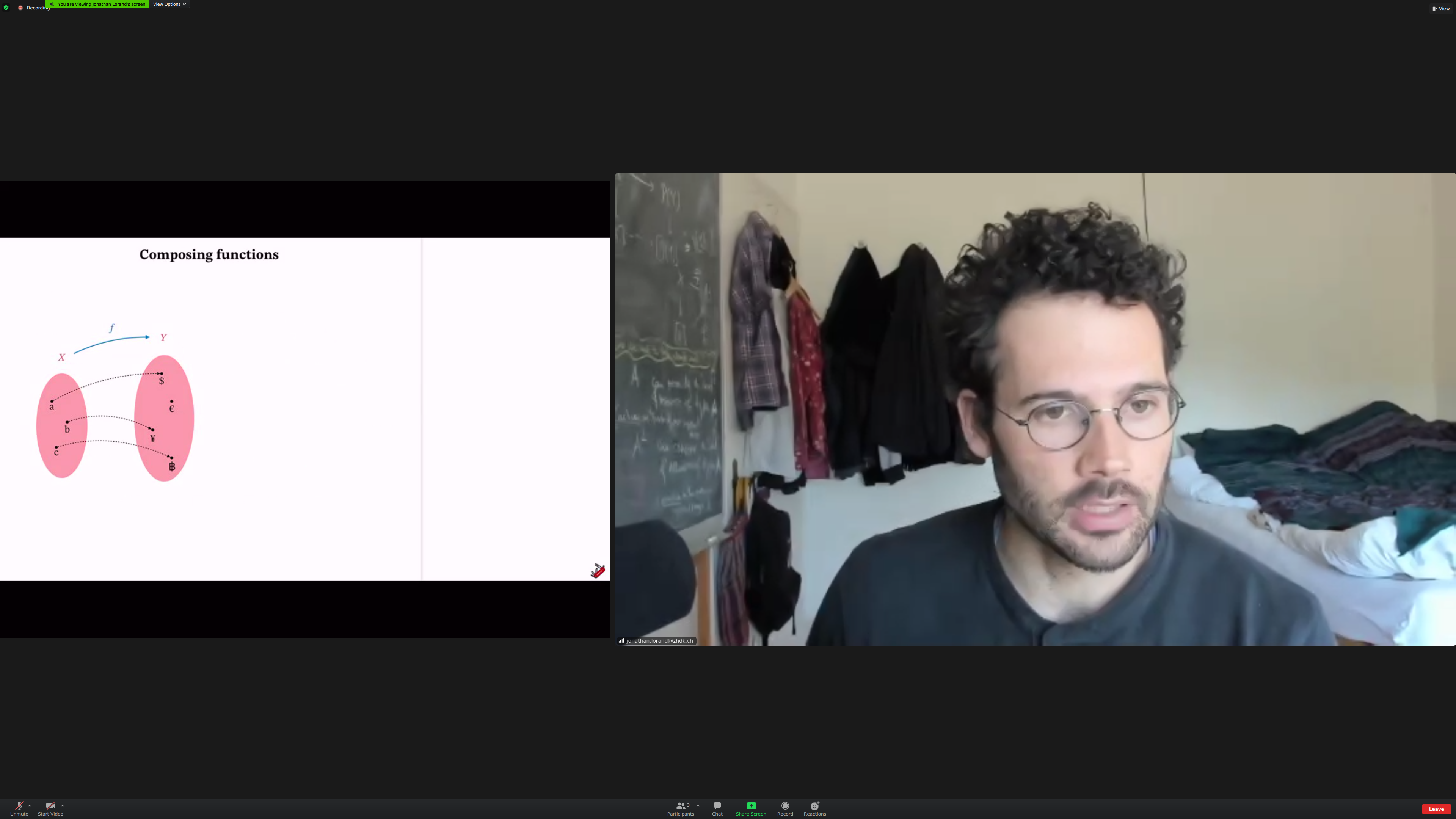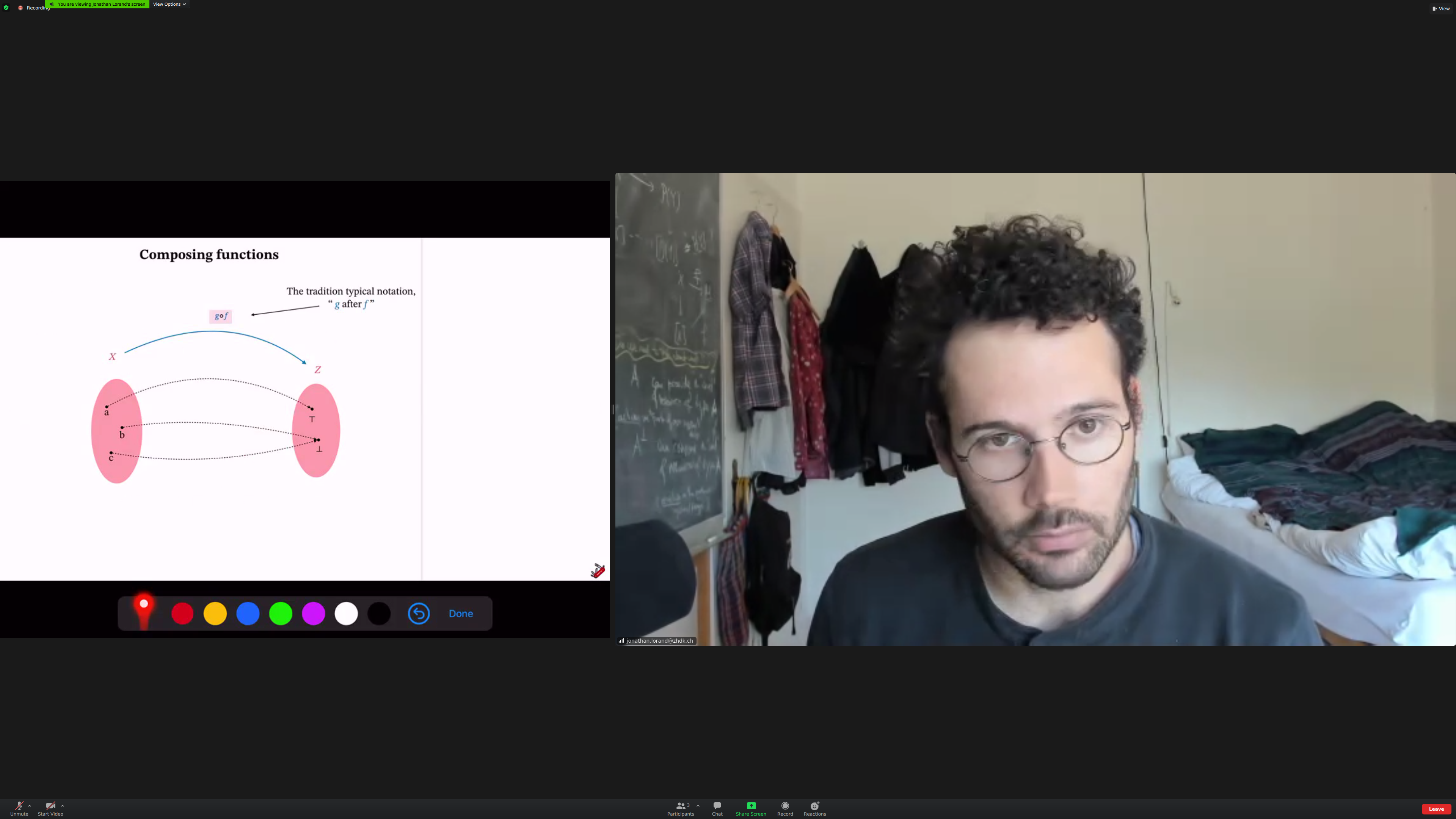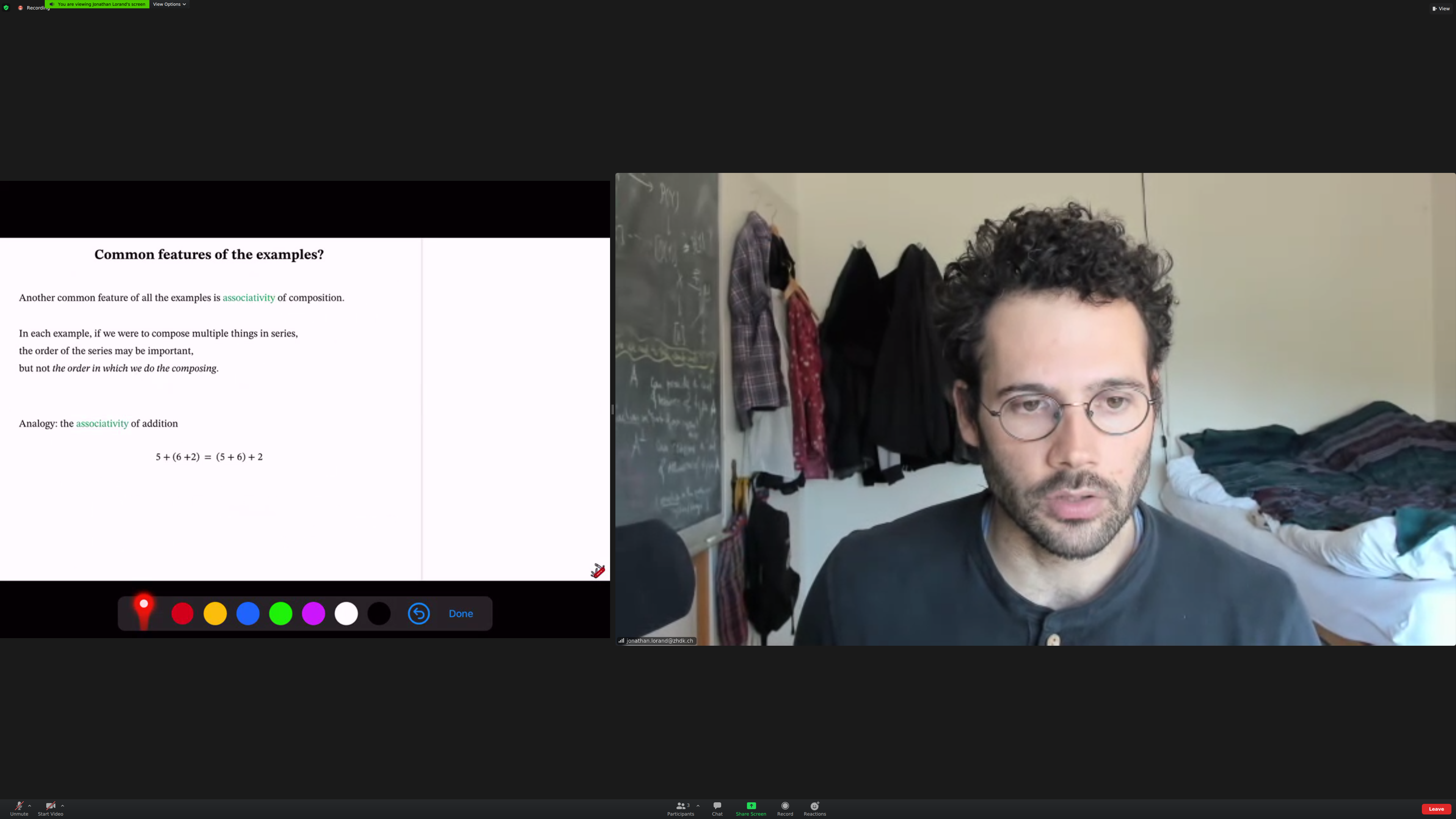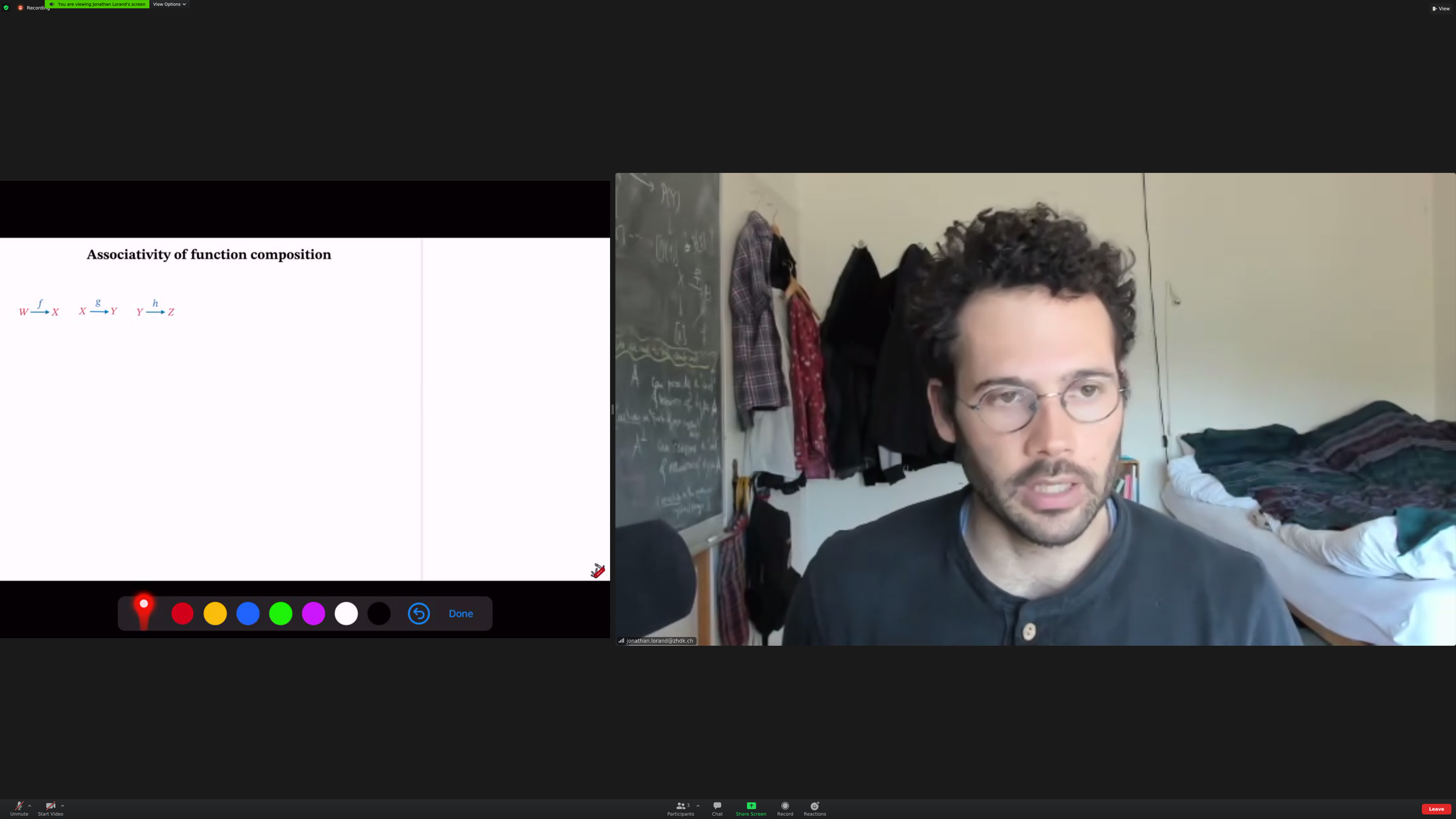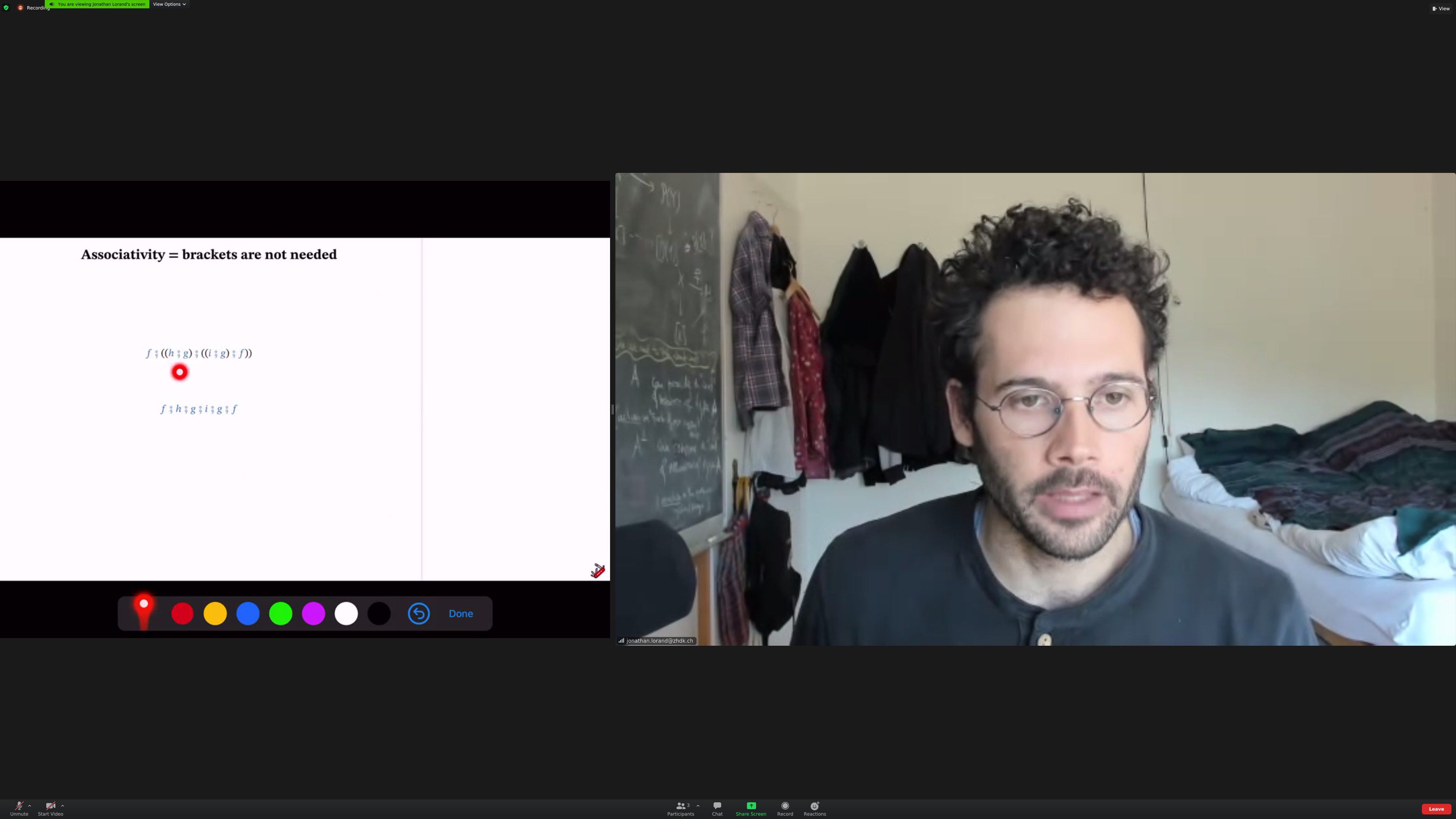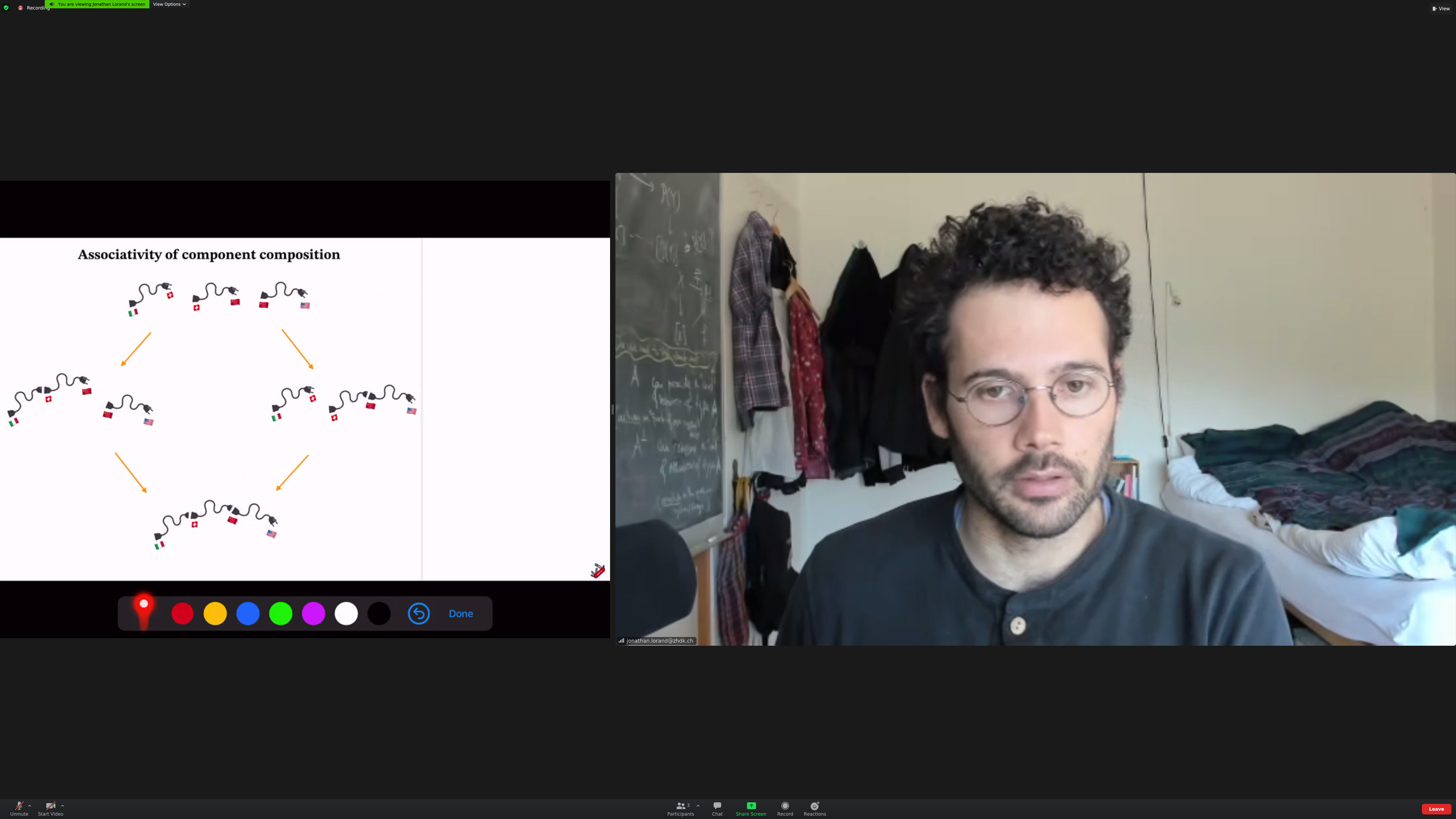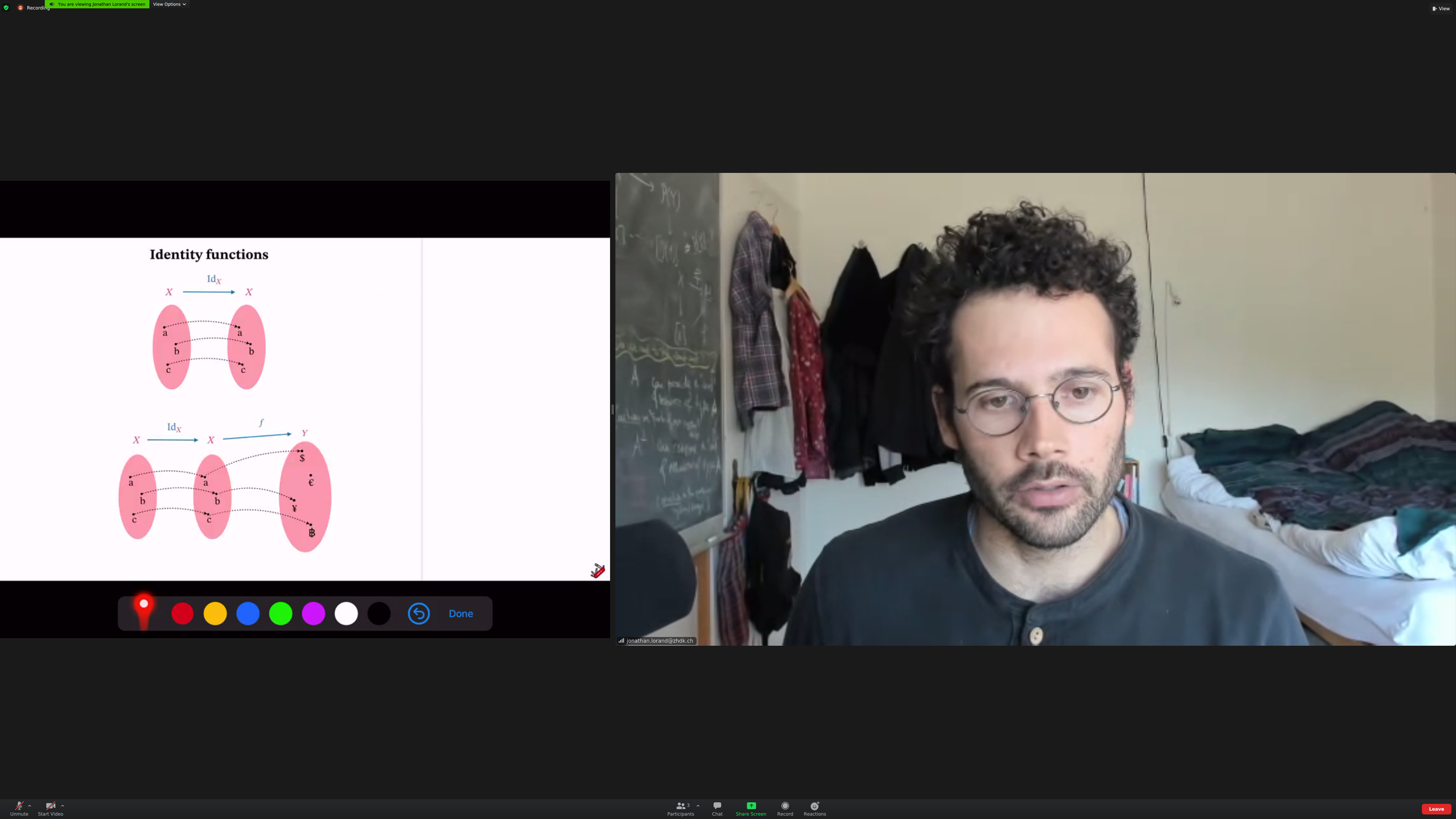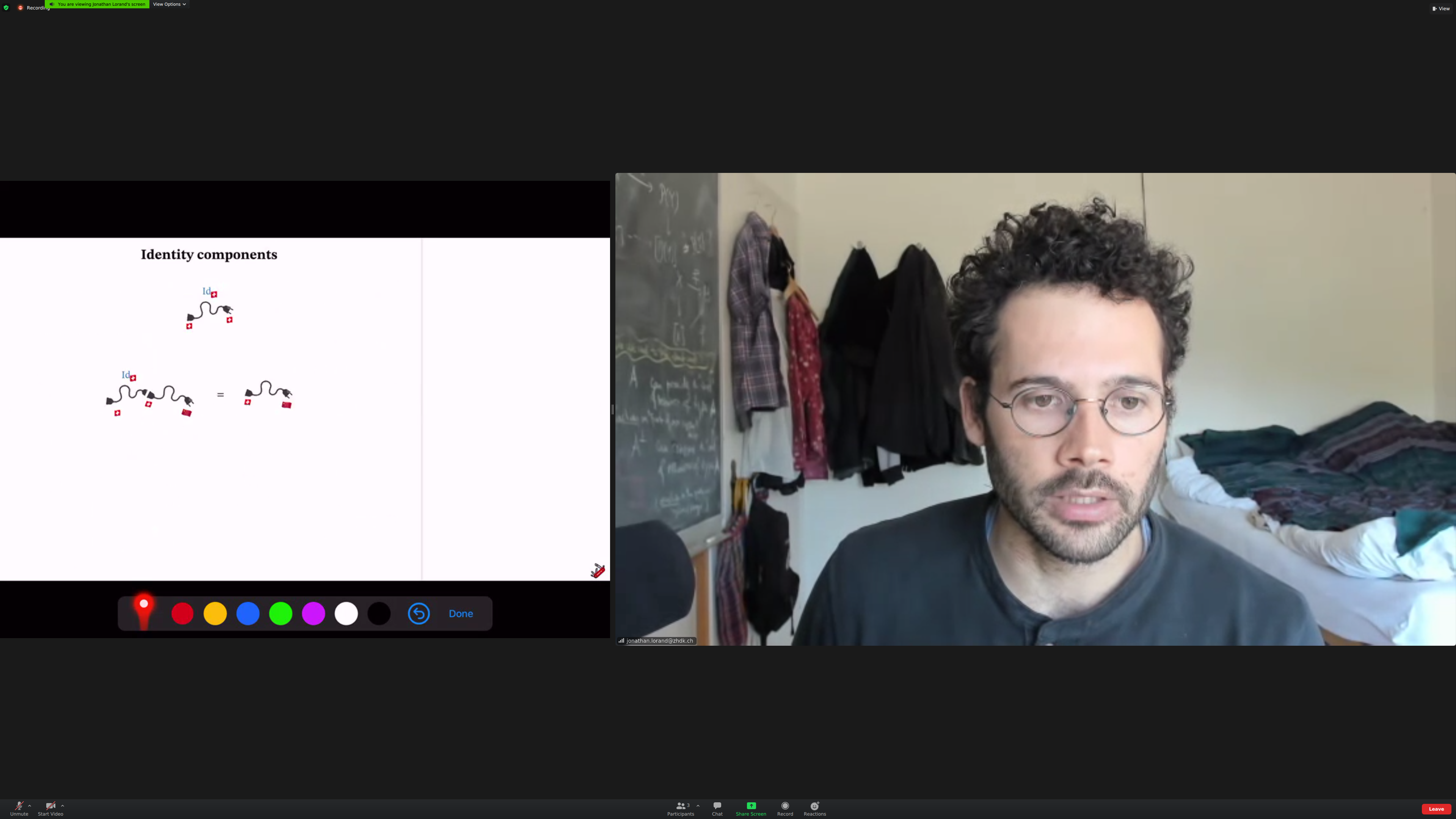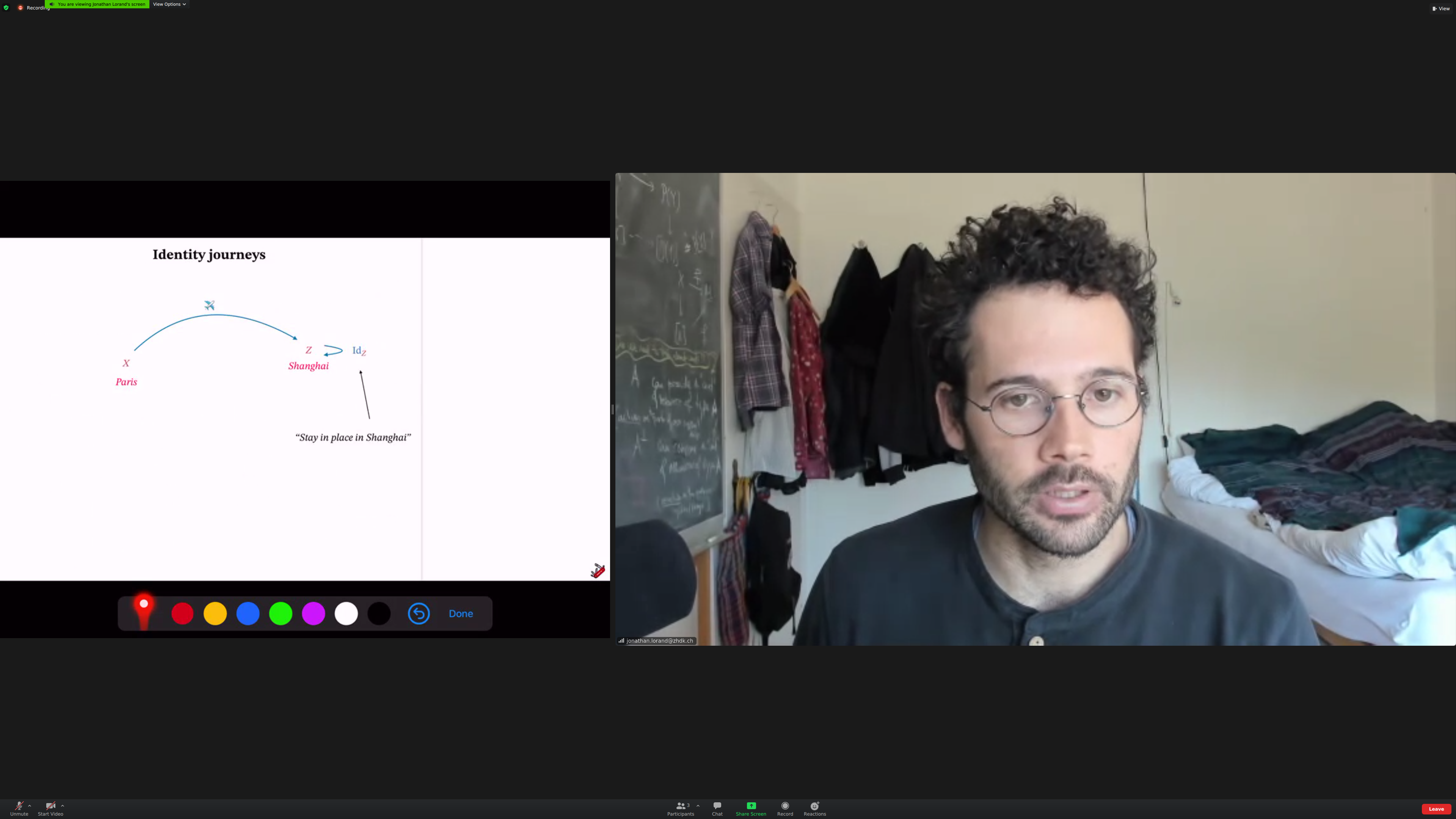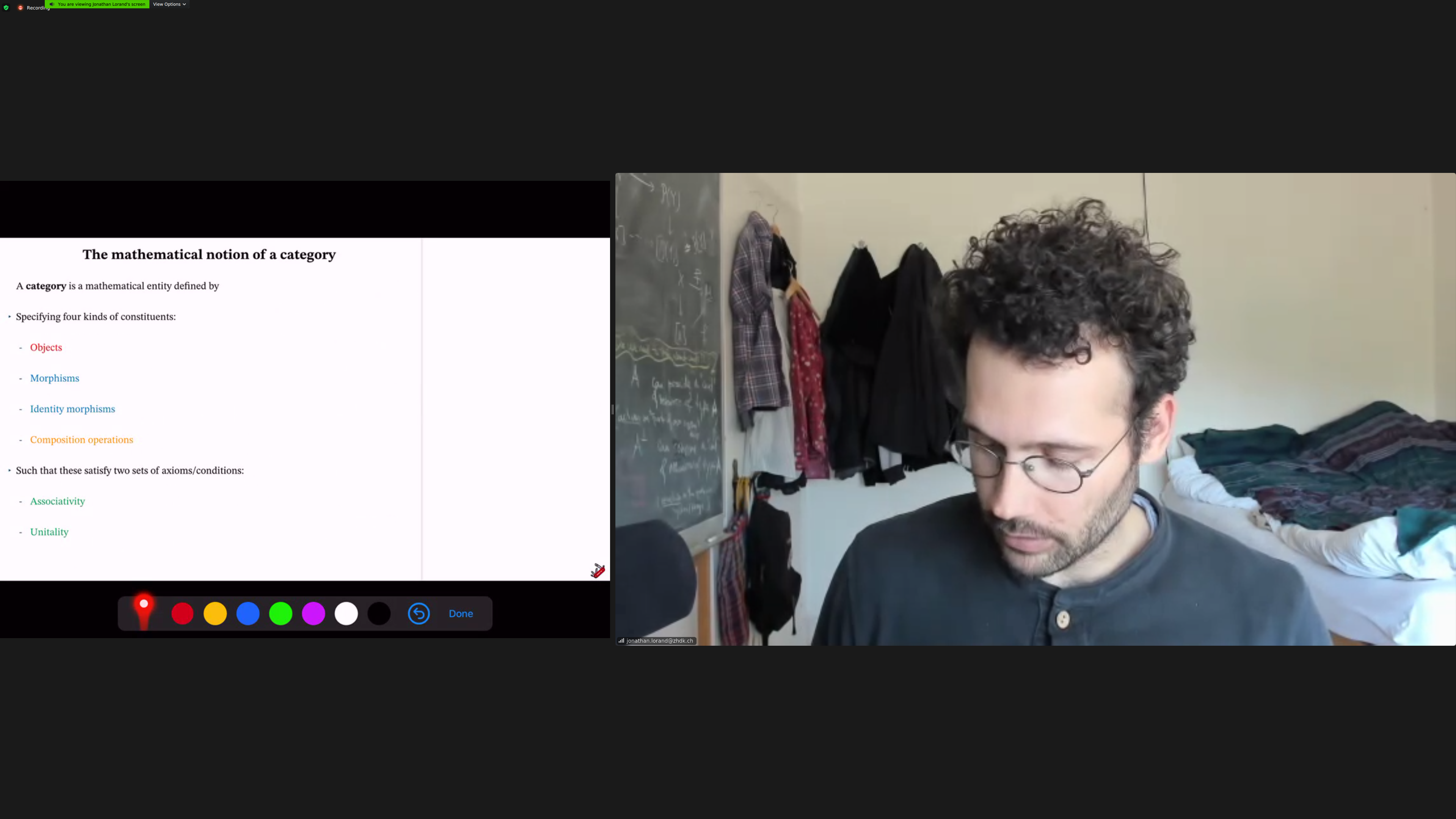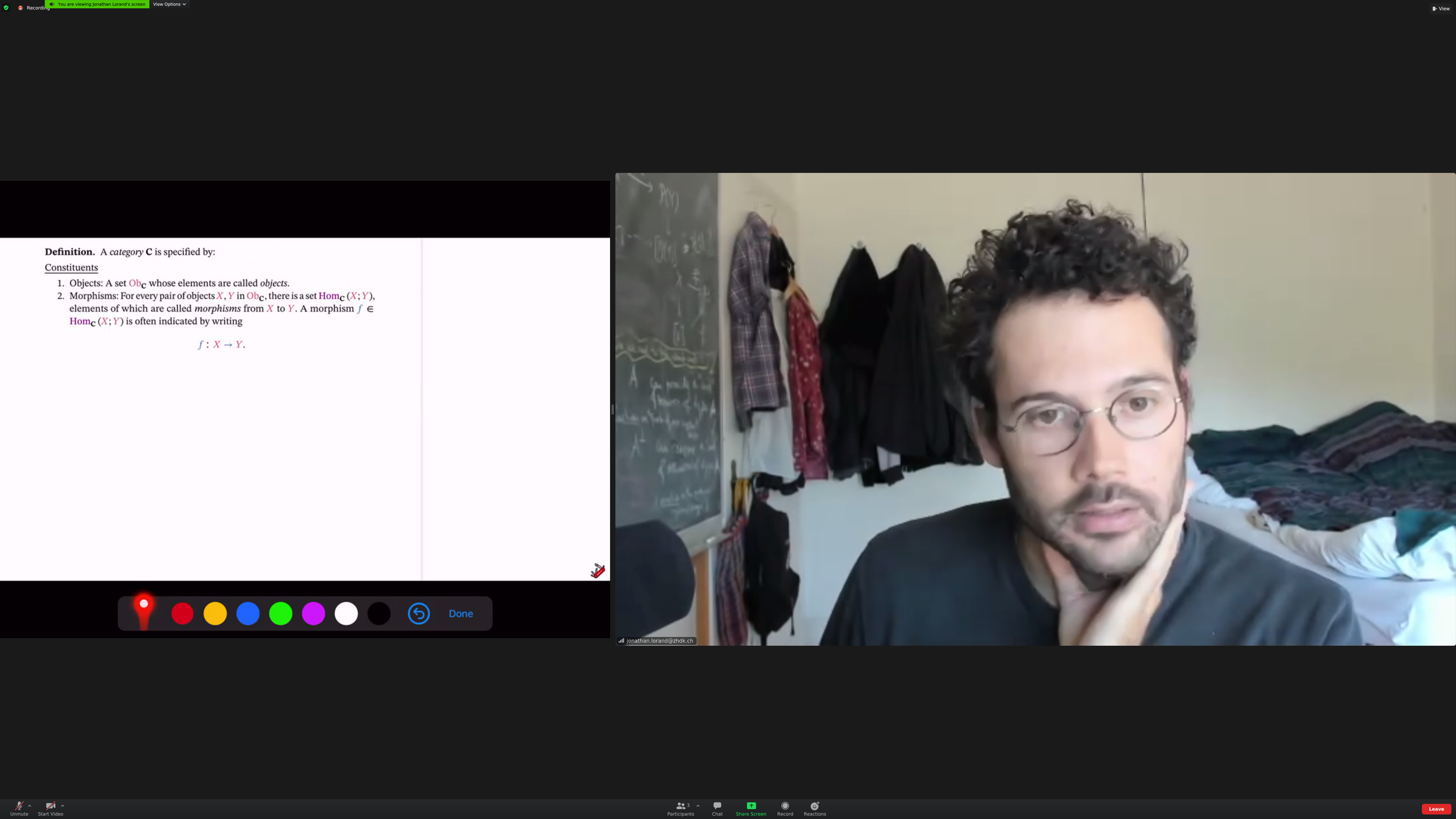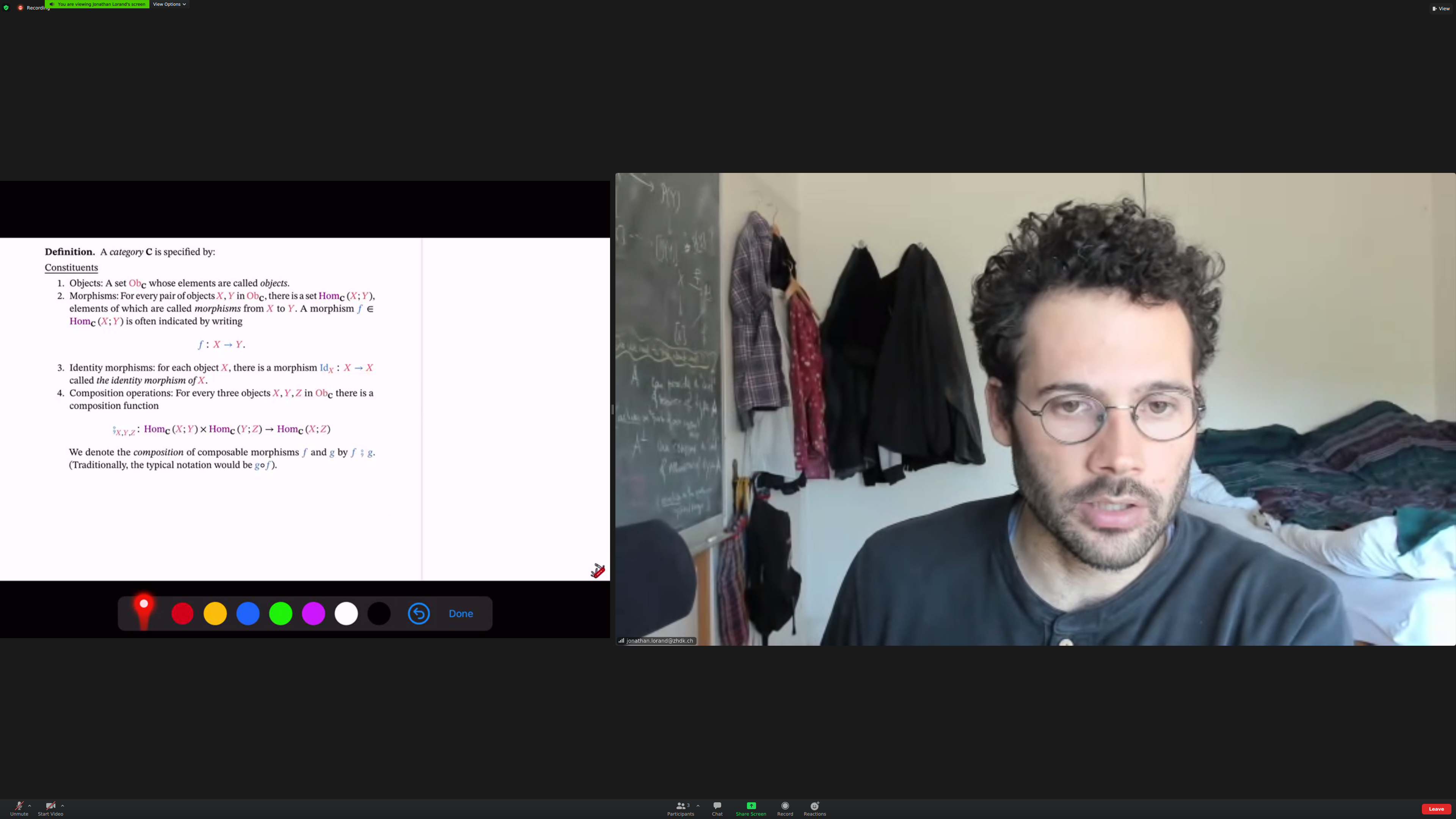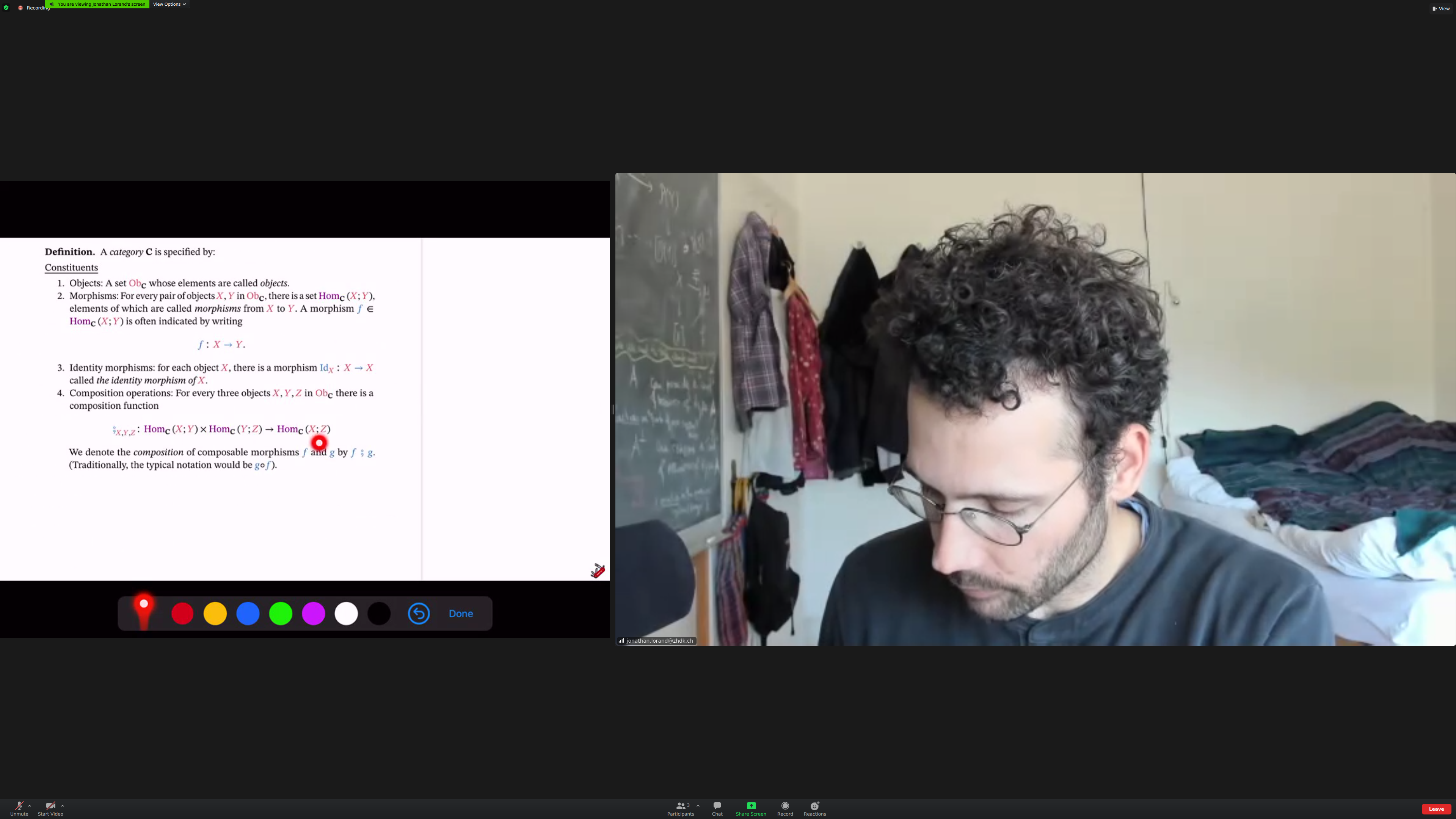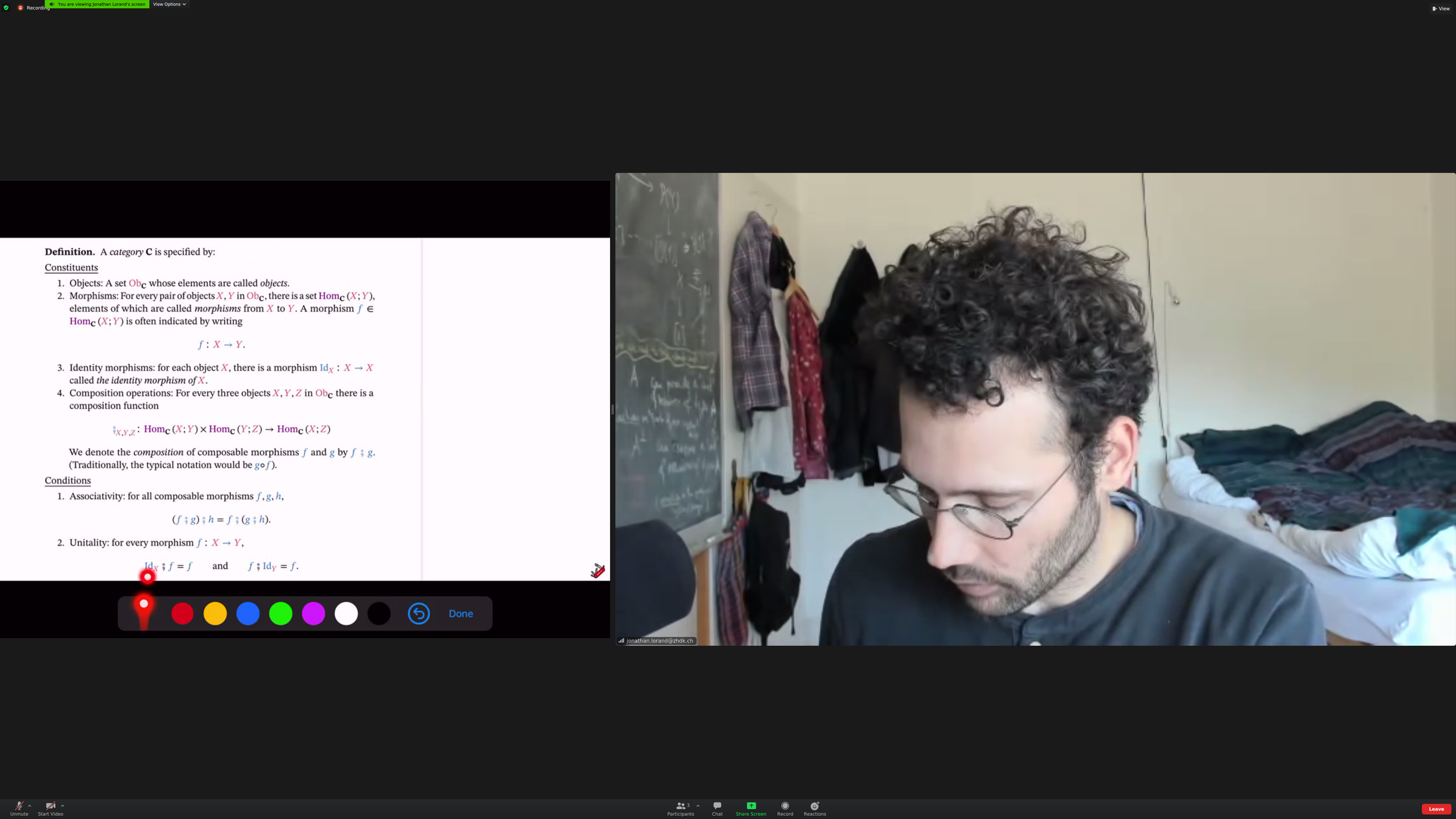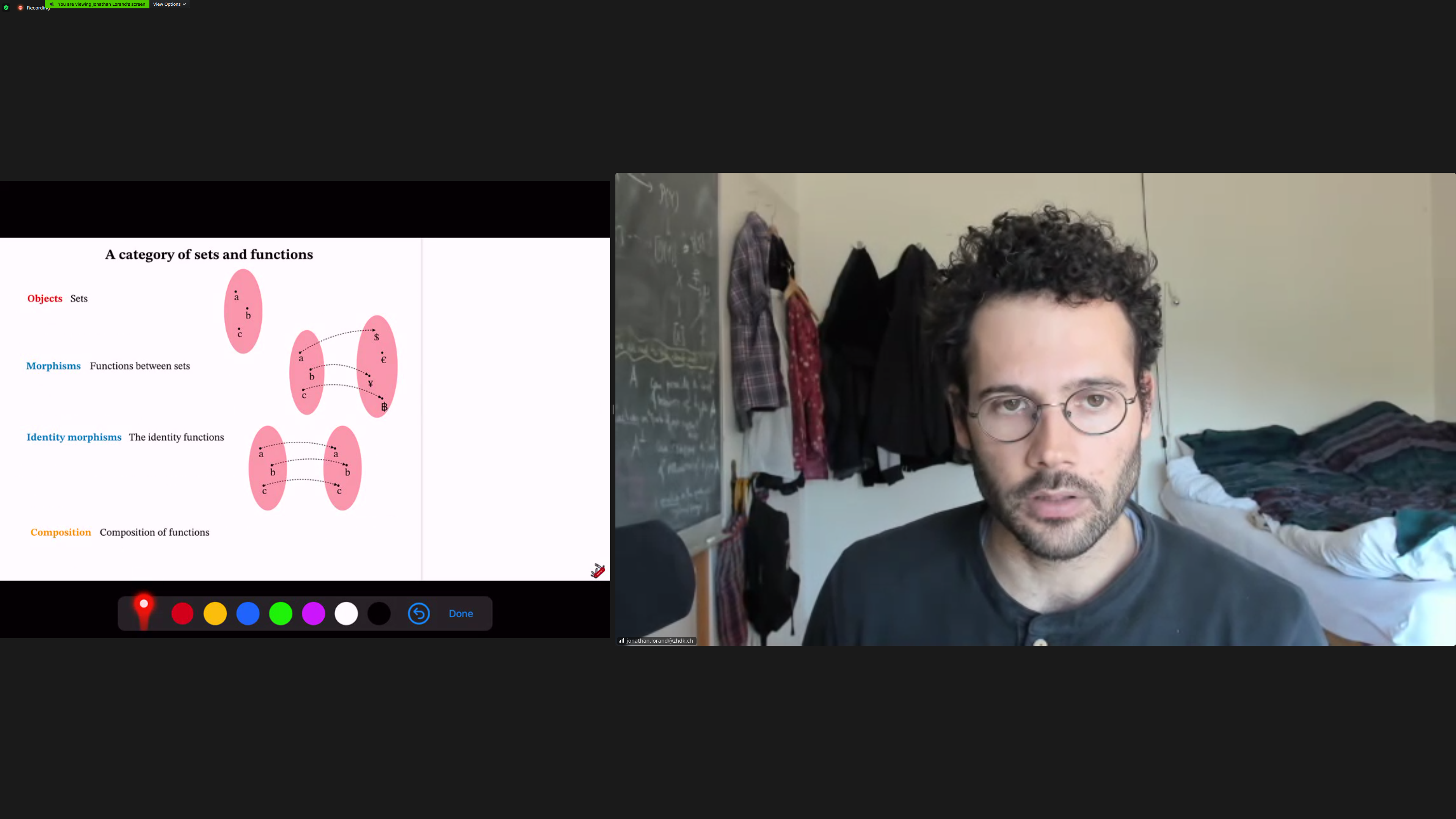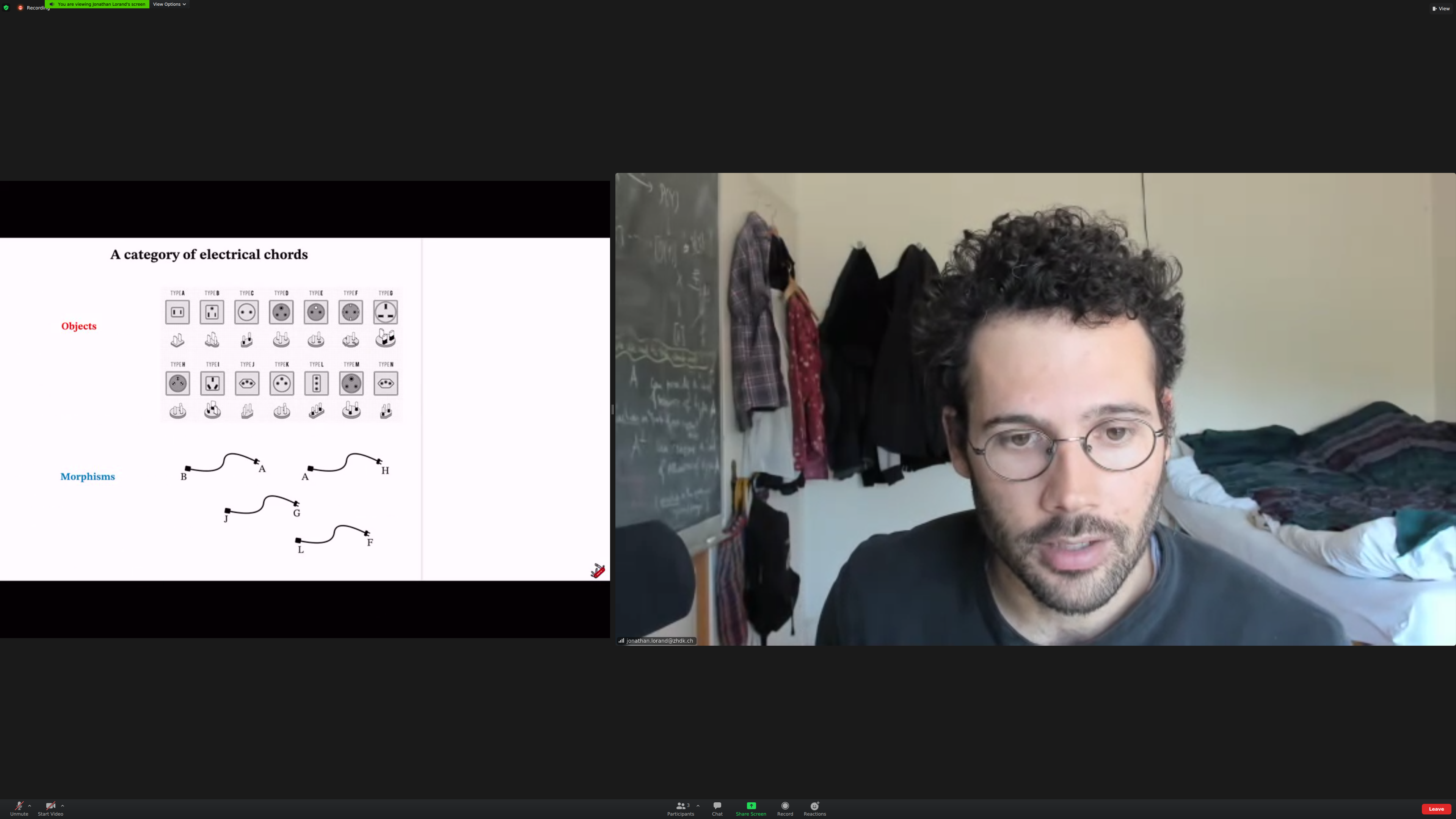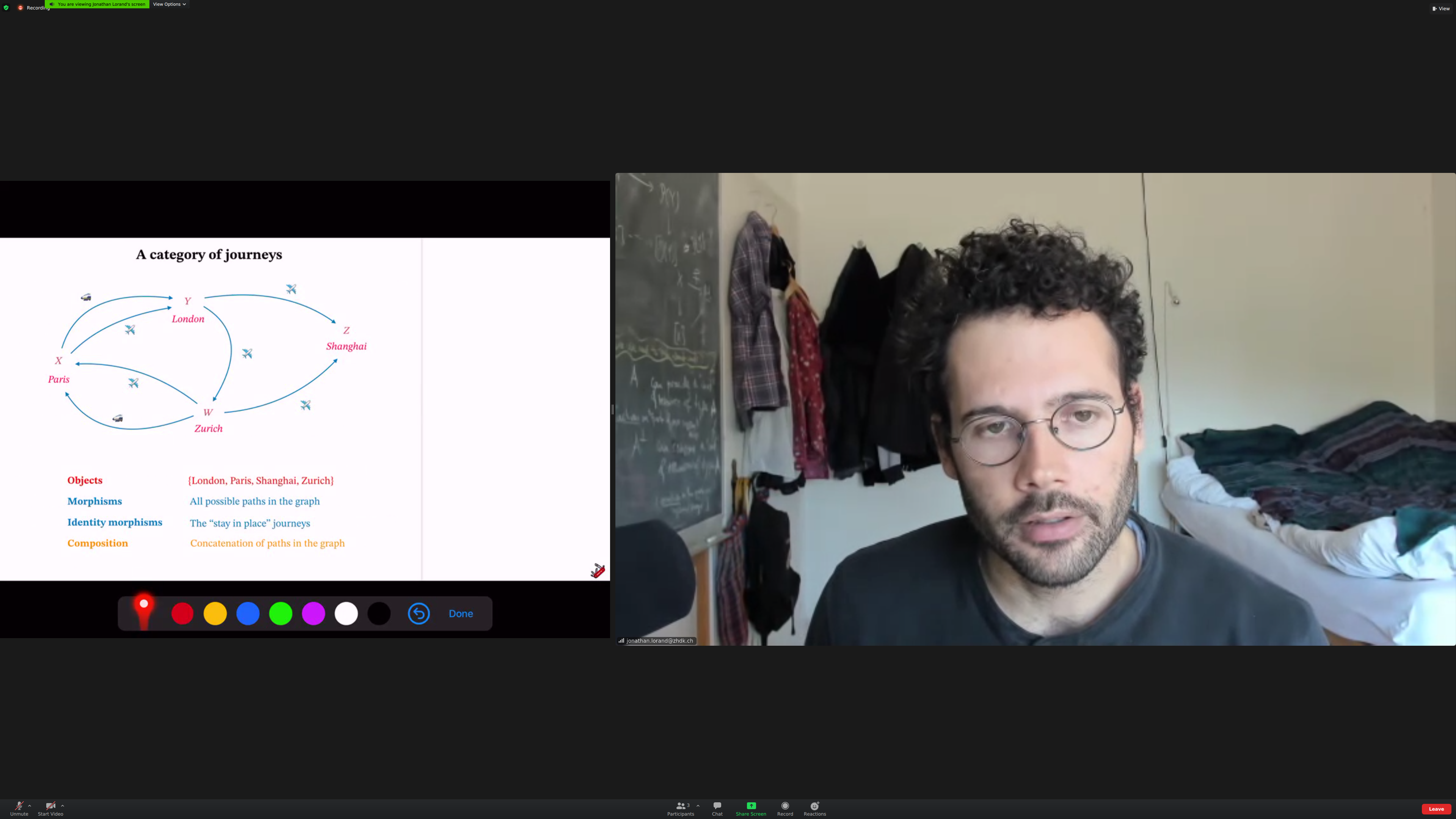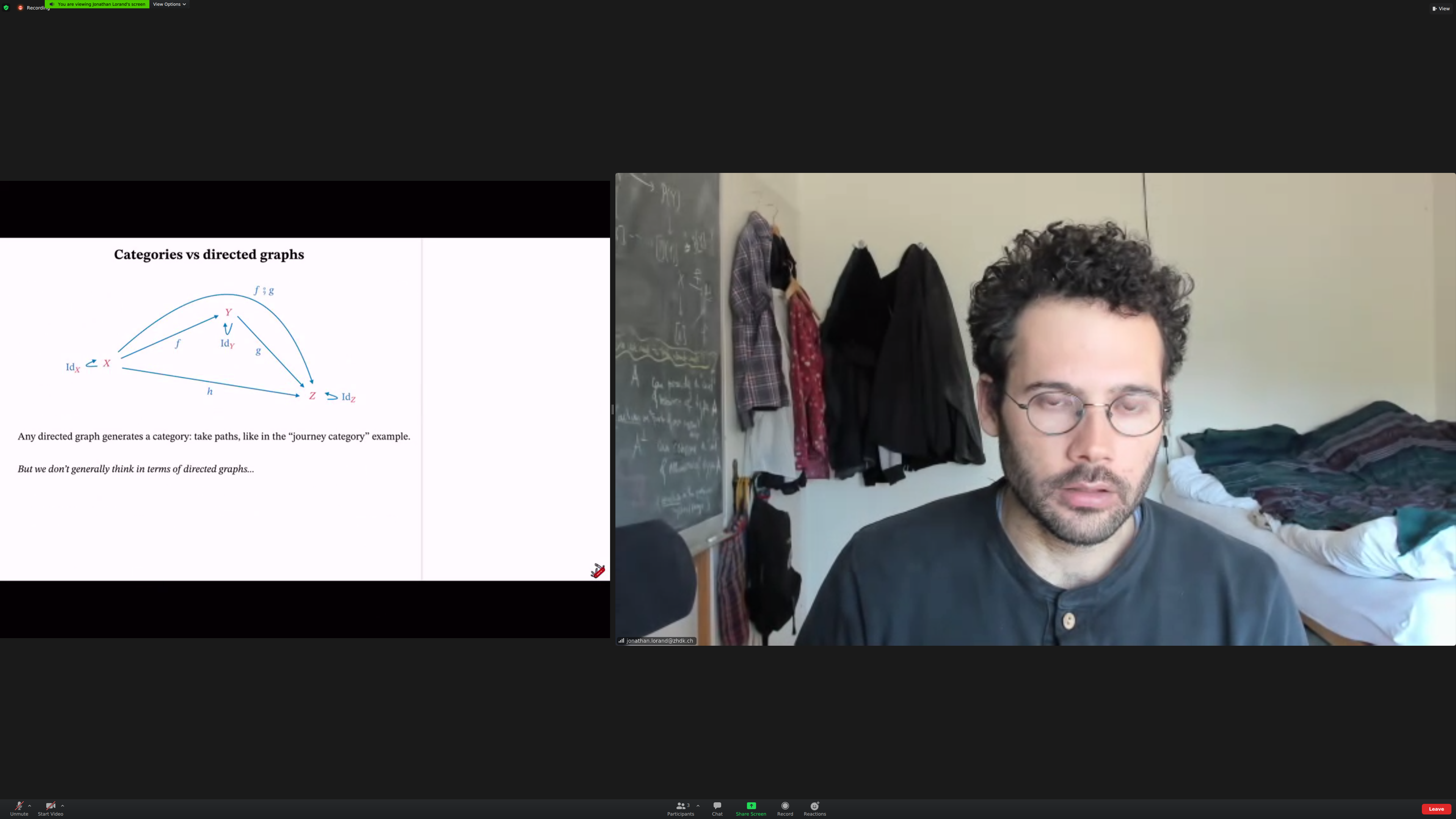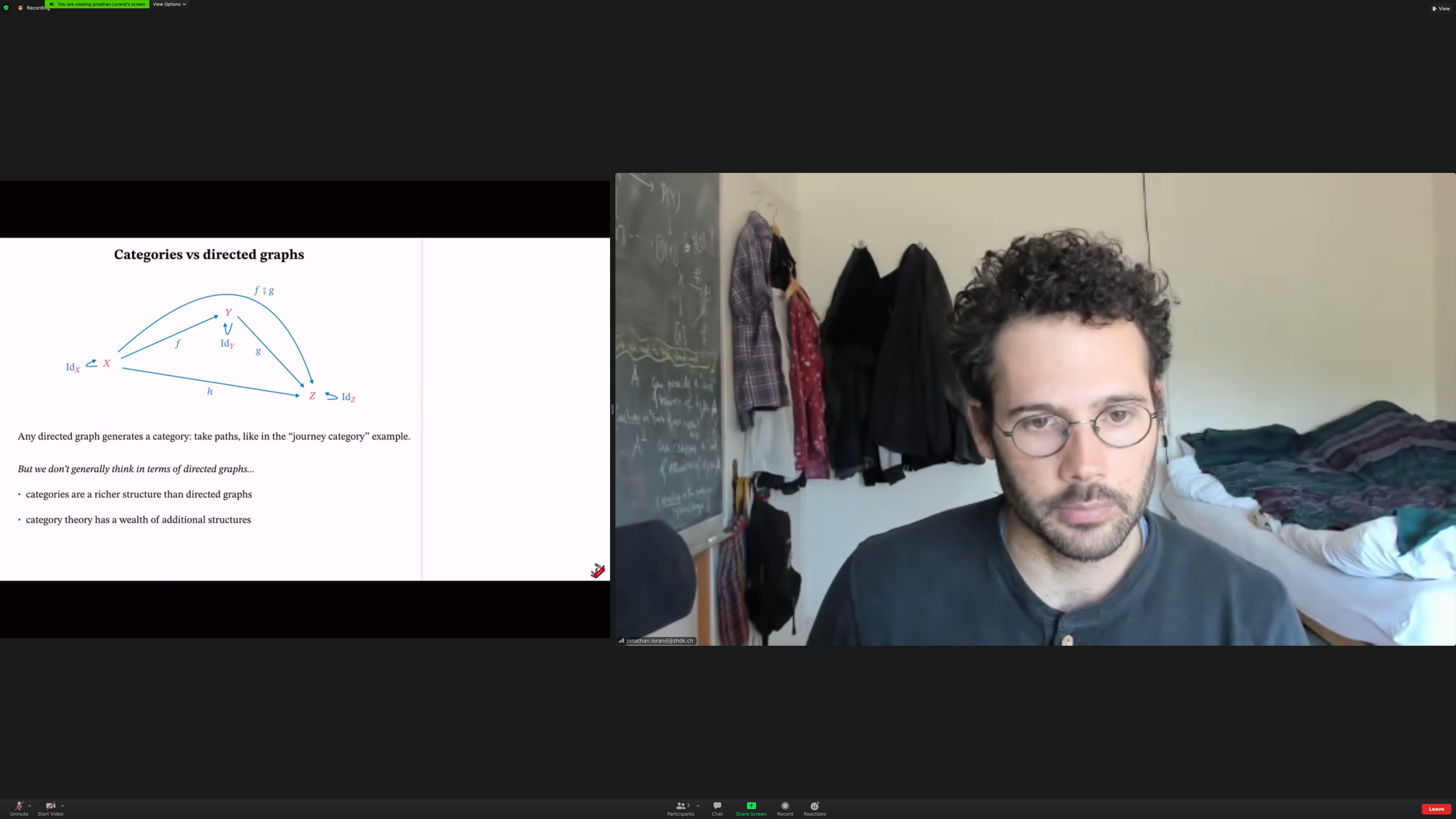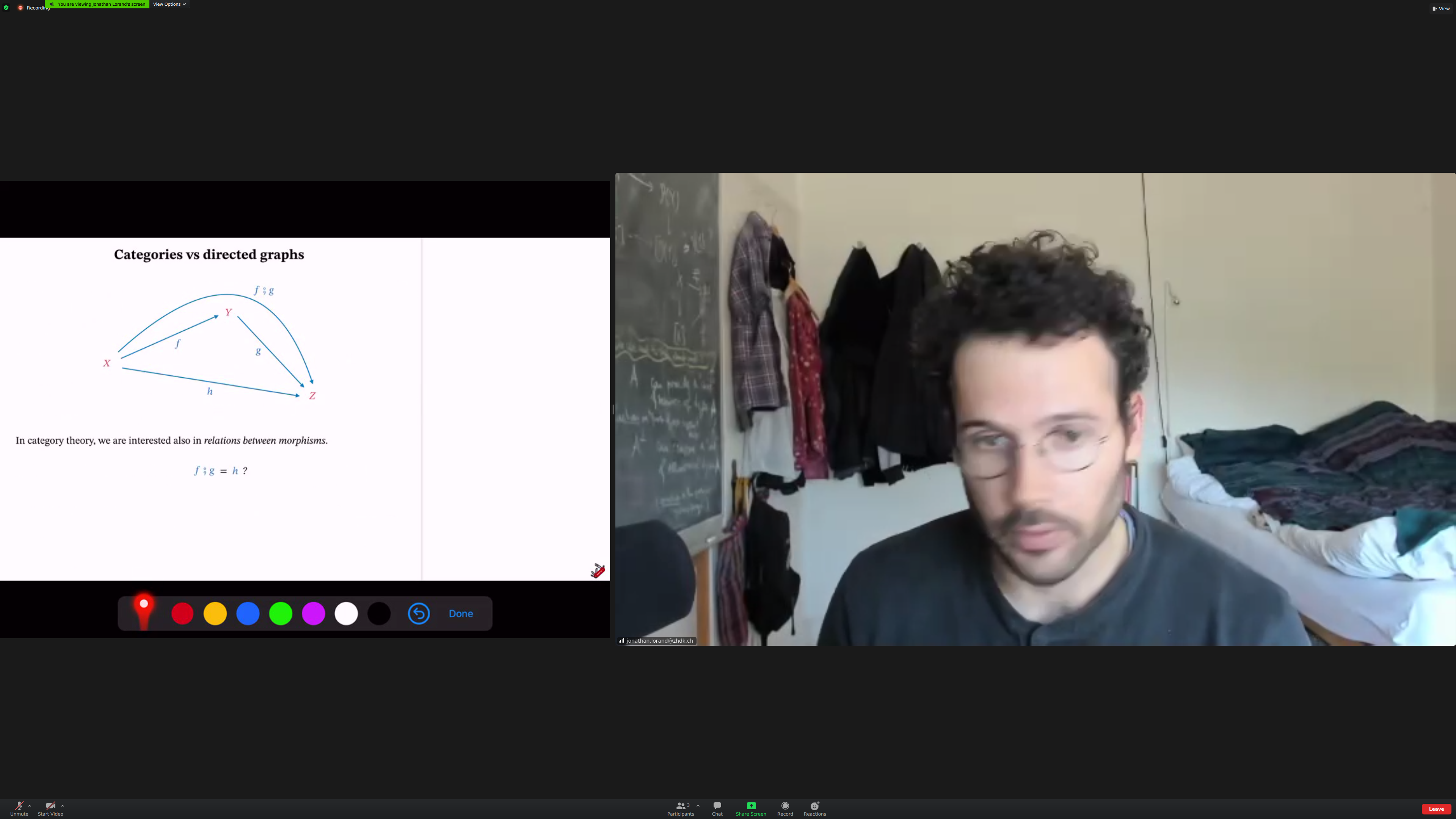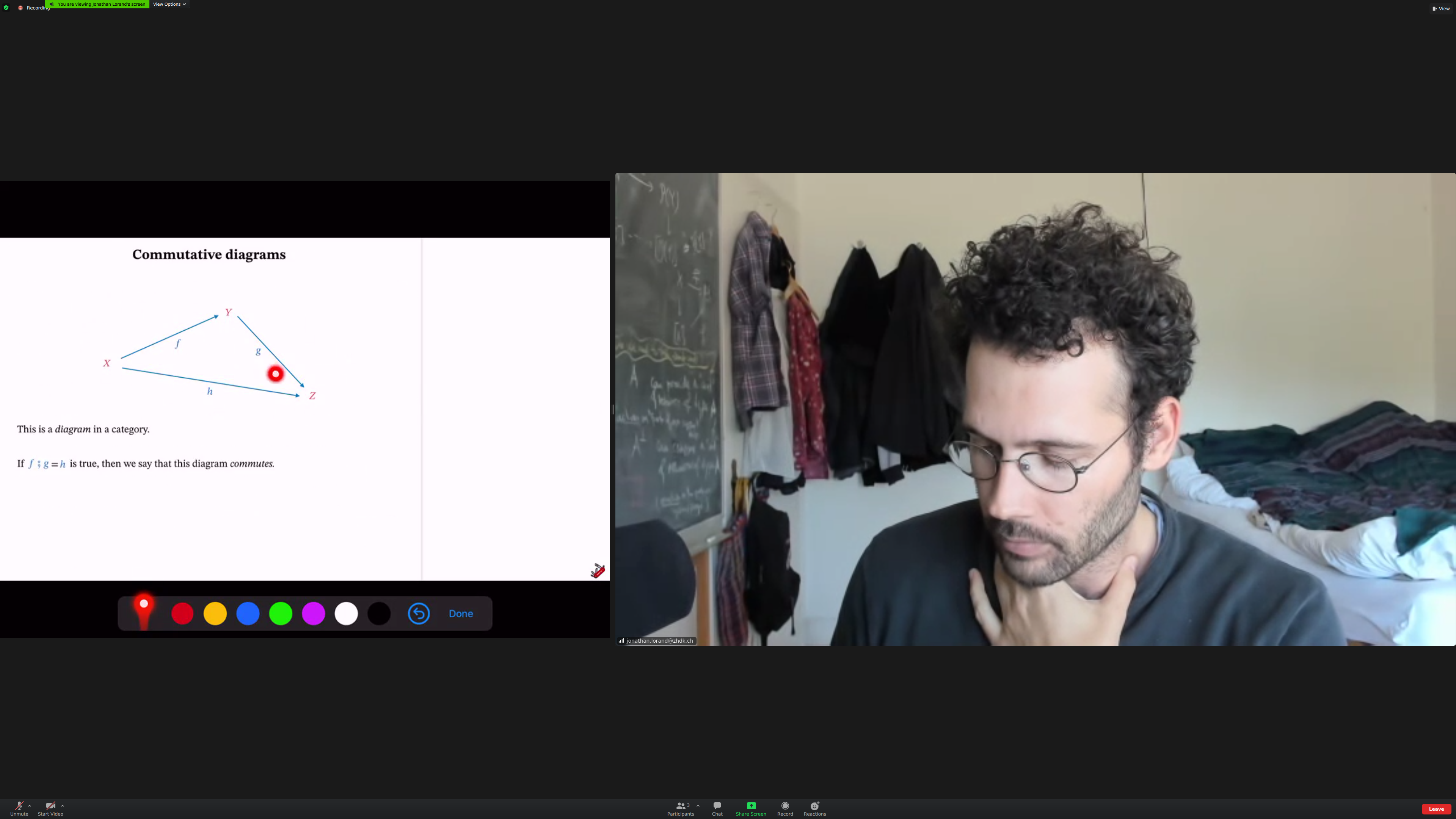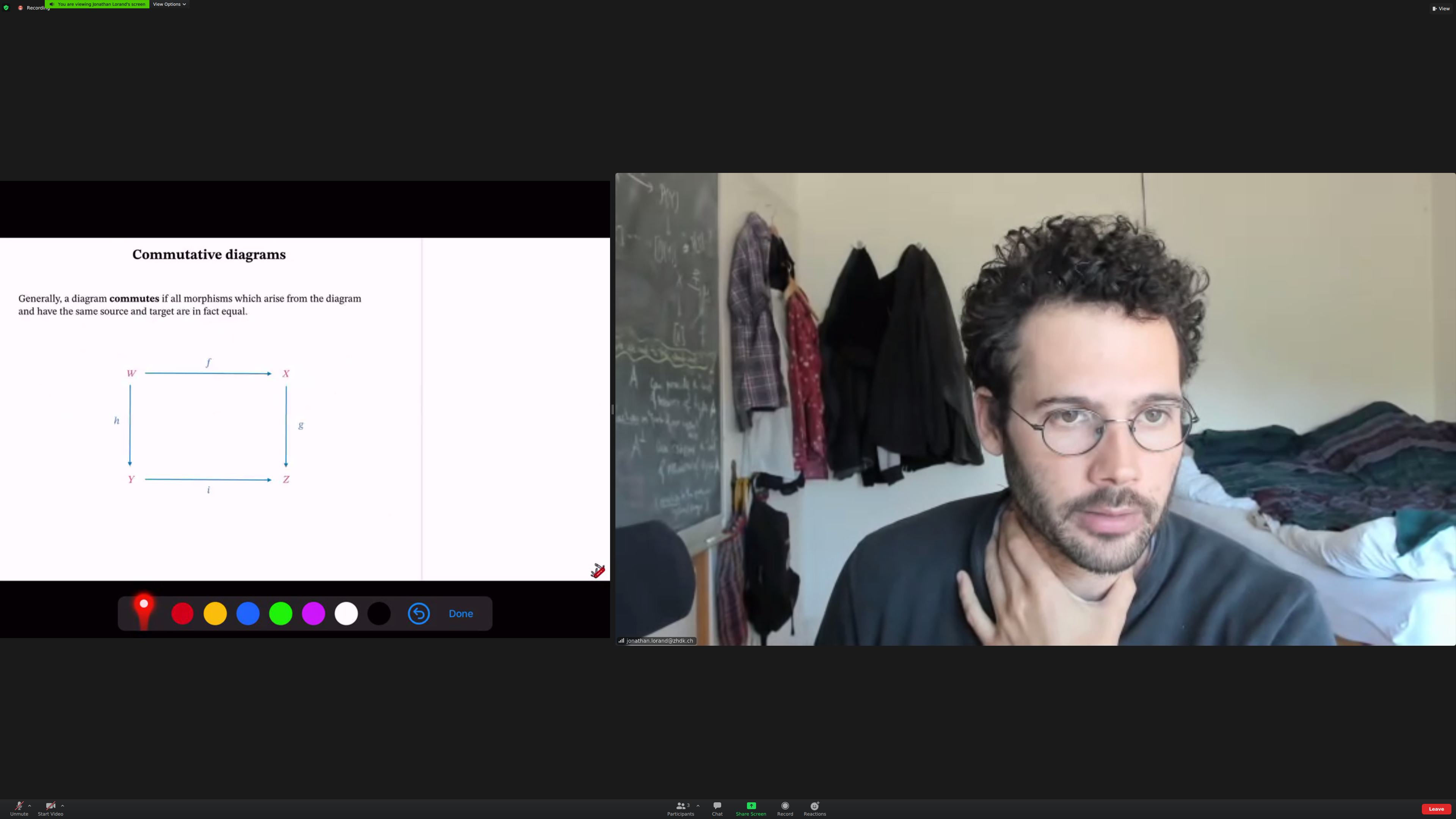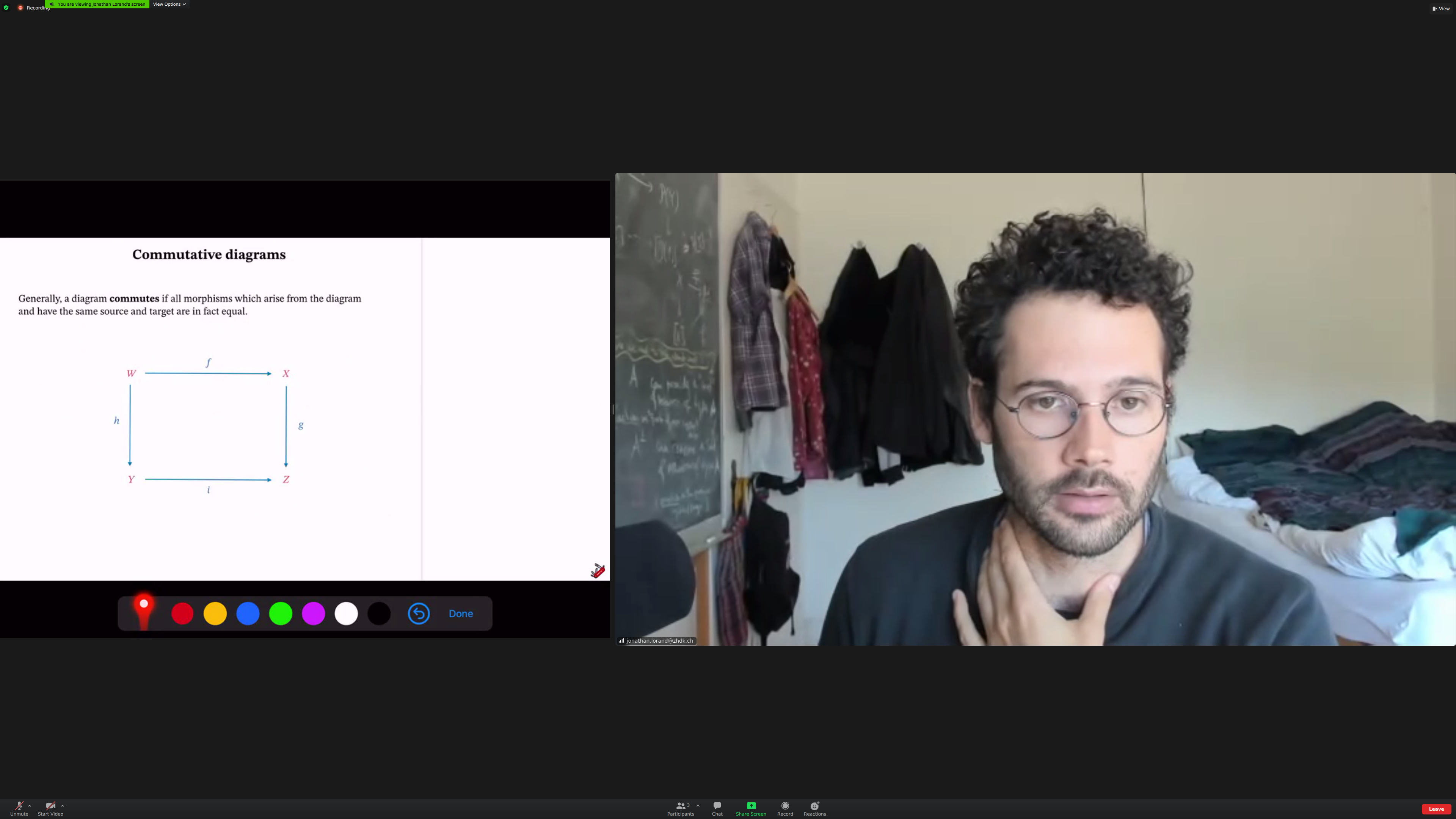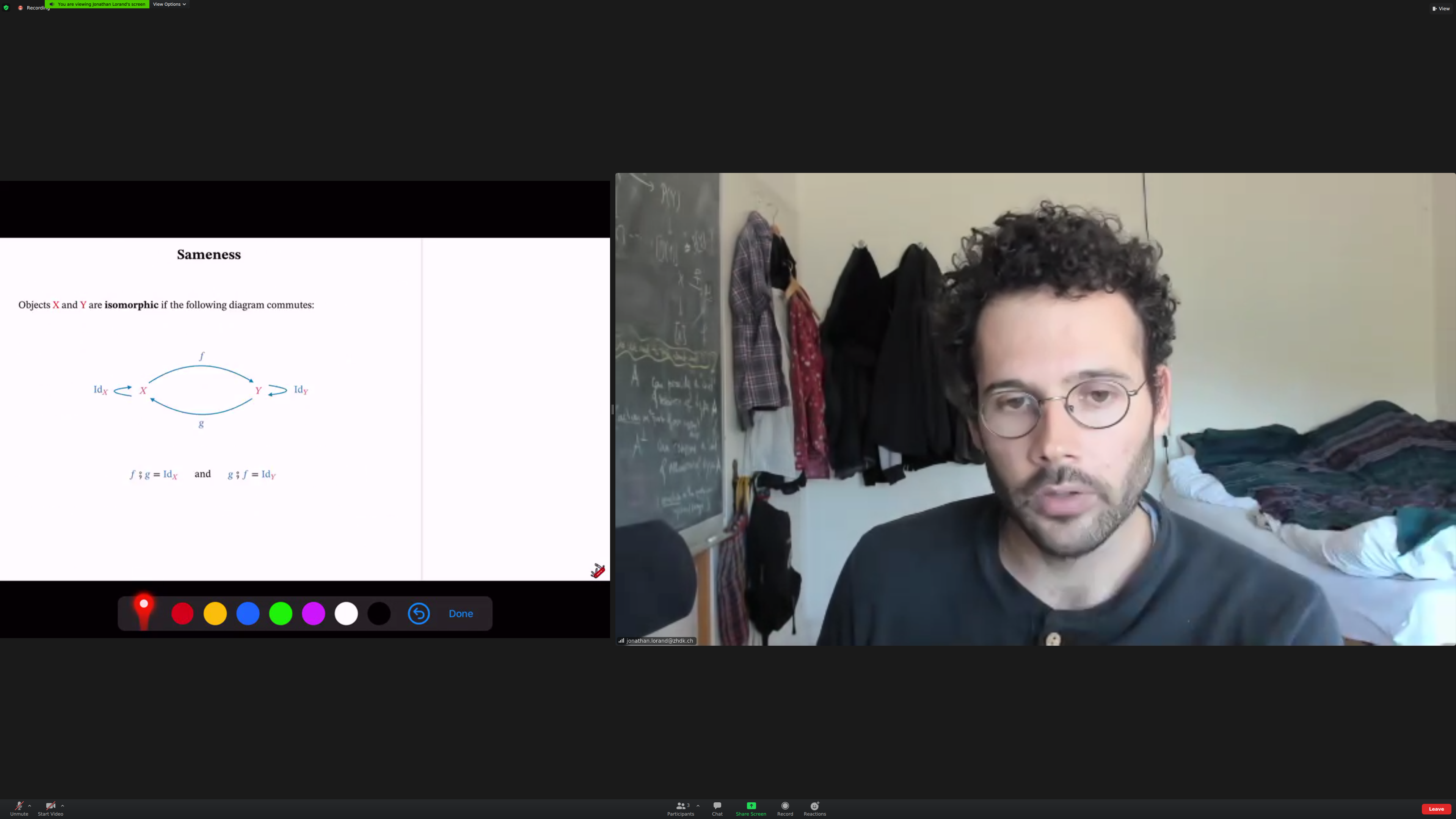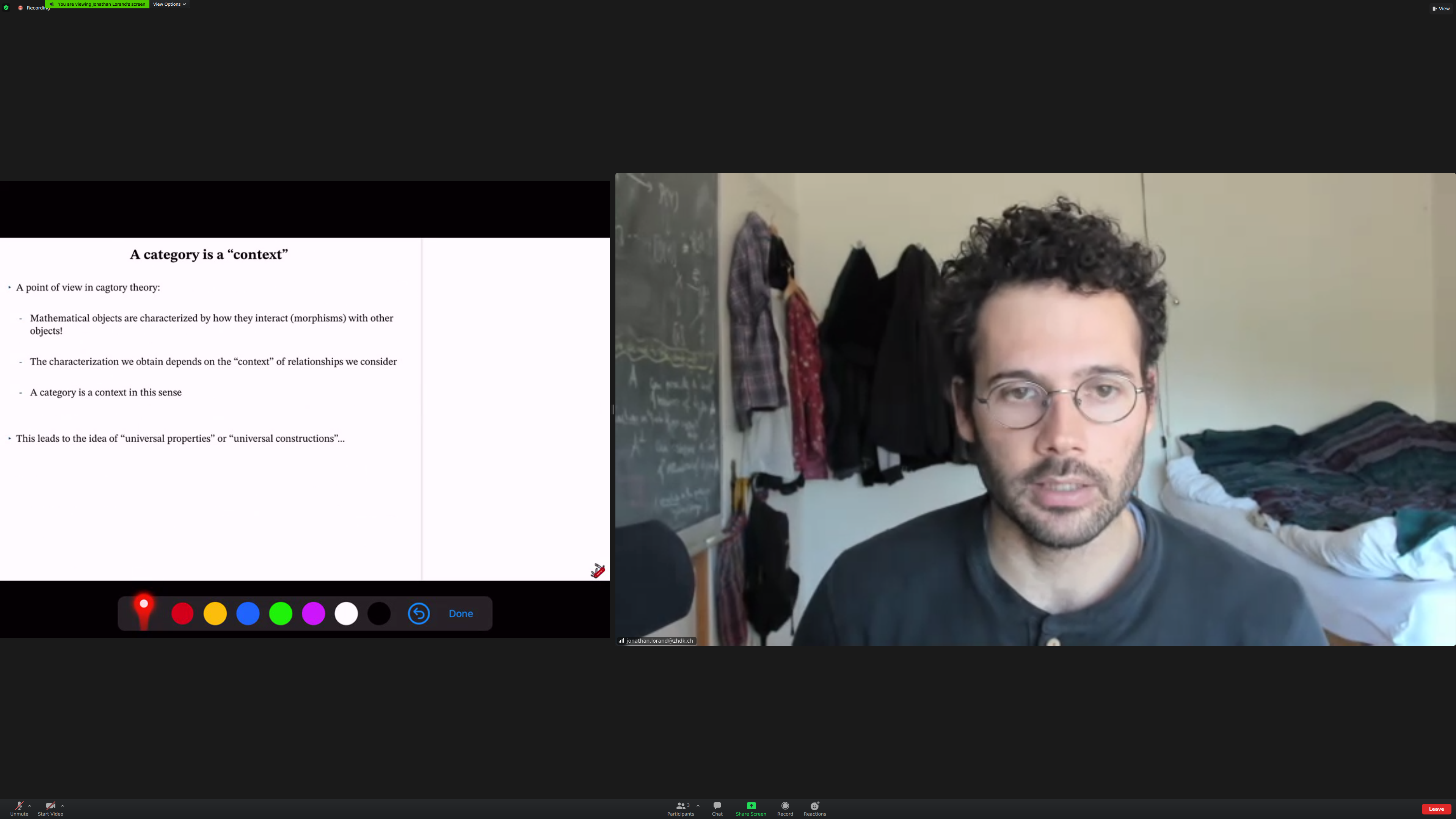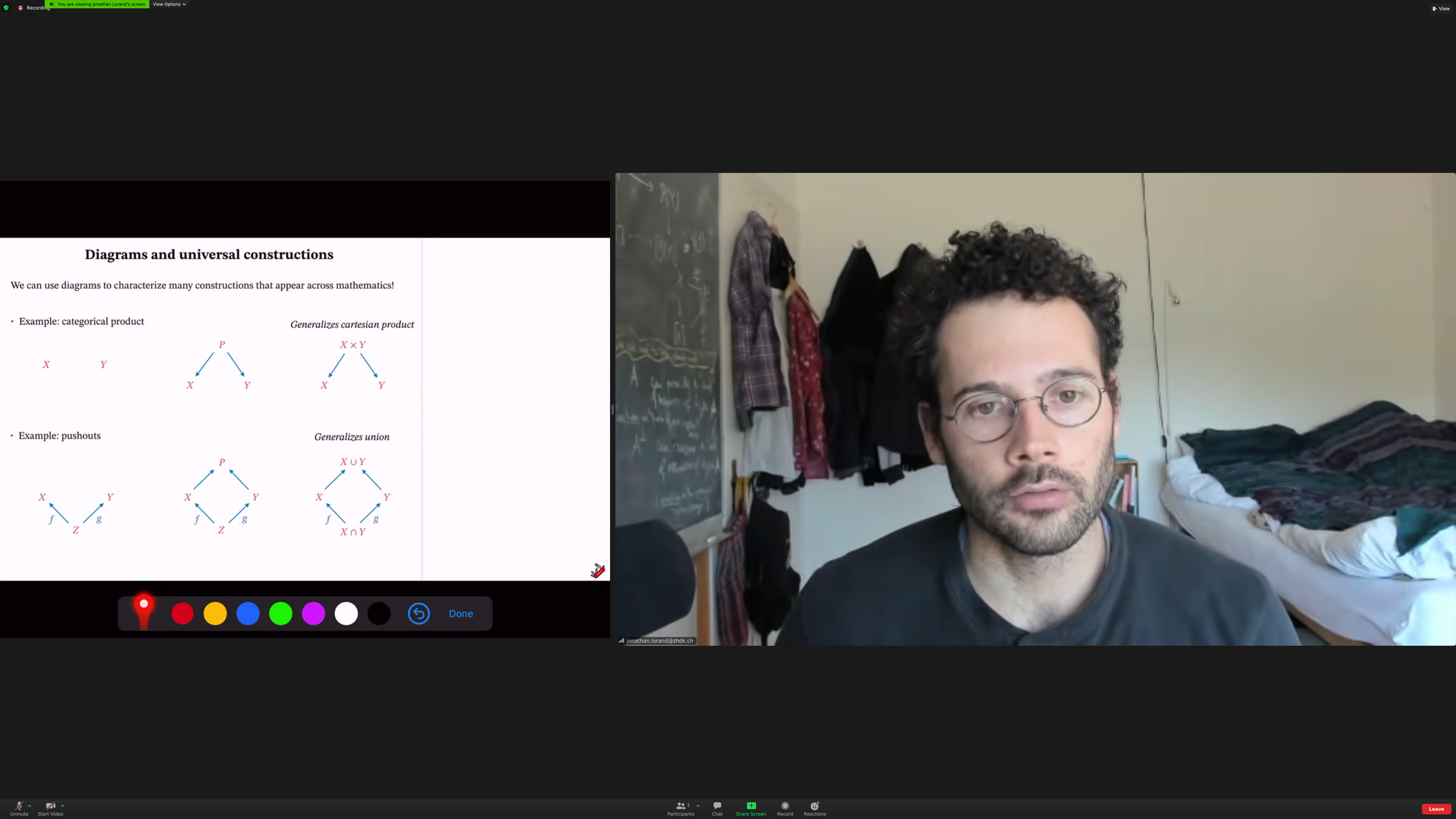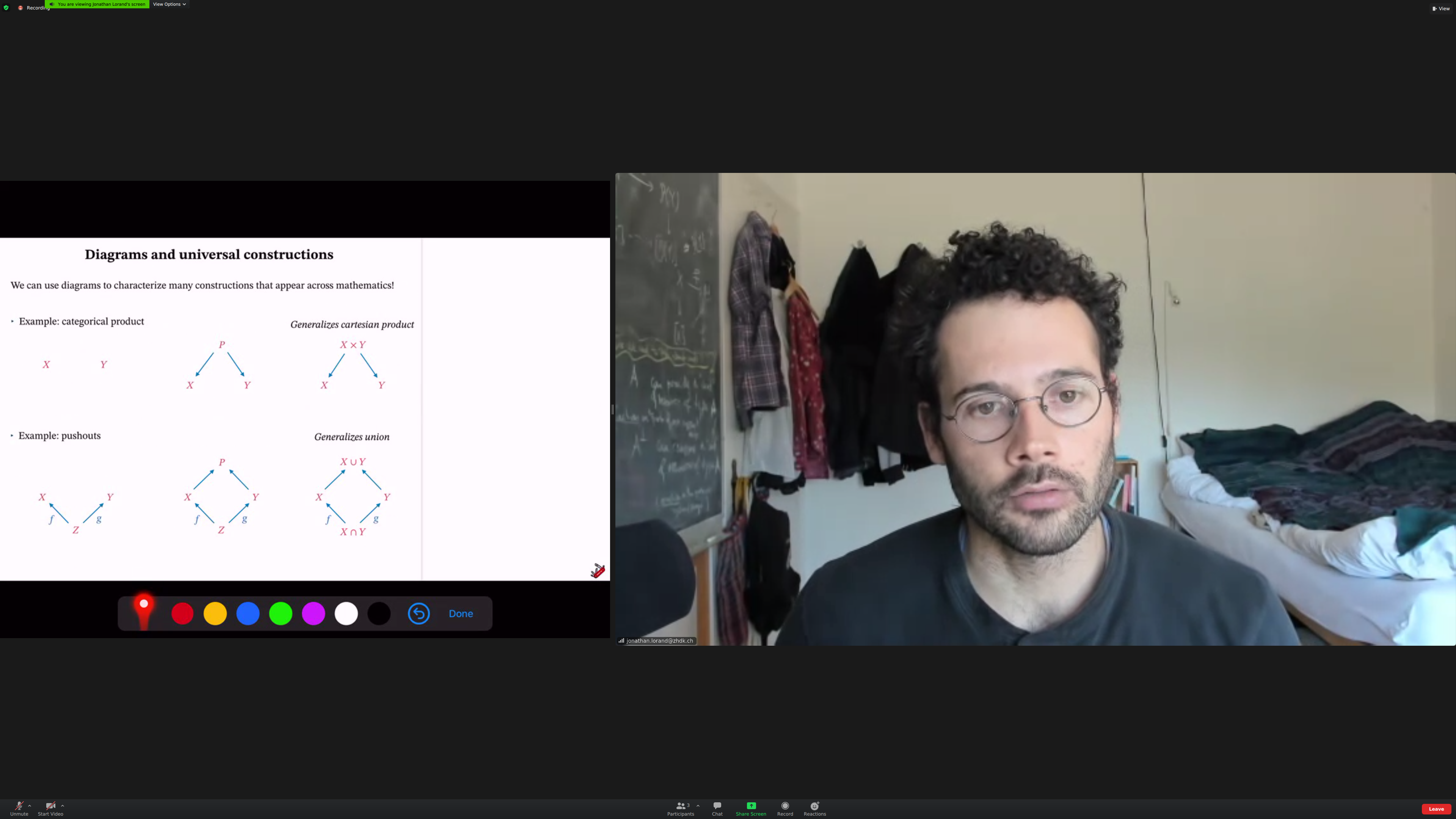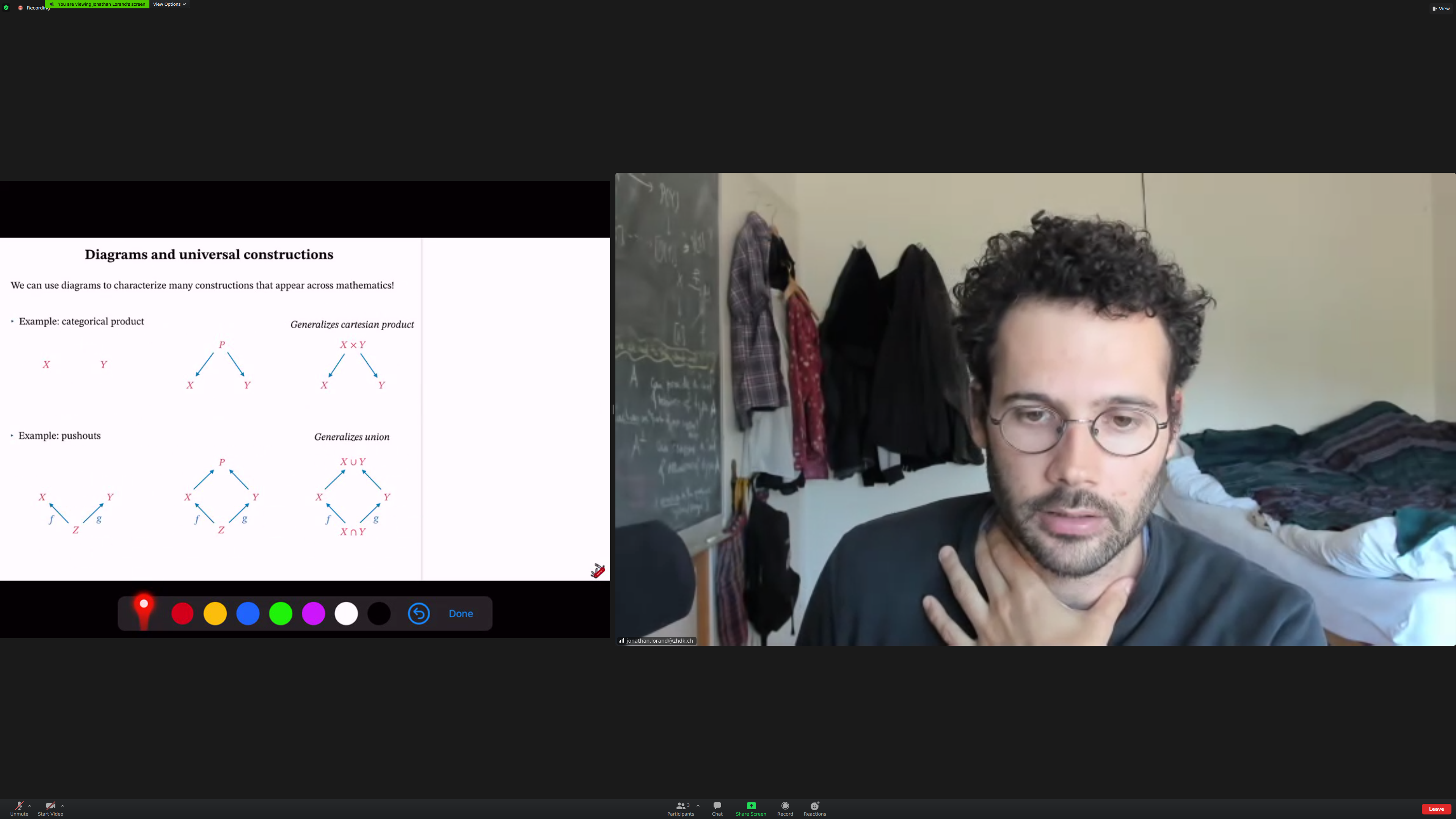-
a [[class]]
- on [[2021-05-30]]
Idea of what [[category theory]] is. Basic definition of mathematical concepts.
Notions that are important in category theory. Commutative diagrams; categories as kinds of [[context]]. At the end, how this fits in a bigger picture.
Aside: I'm reading Feynman and this fits in amazingly well with the introduction of that book, six easy pieces.
An [[elegant framework]] for reasoning about situations where we are composing stuff together. [[modeling]], [[computation]].
Category theory is about [[composing stuff]] together.
Example: composing [[journeys]].
Example: composing processes. Mathematical functions, algorithms, physical processes.
Notation: boxes instead of arrows. Directionality is from left to right.
The output of the first box is the same [[type]] as the input of the second.
You can also compose physical components, of course.
And physical processes.
The fundamental example is mathematical; composing functions as sets.
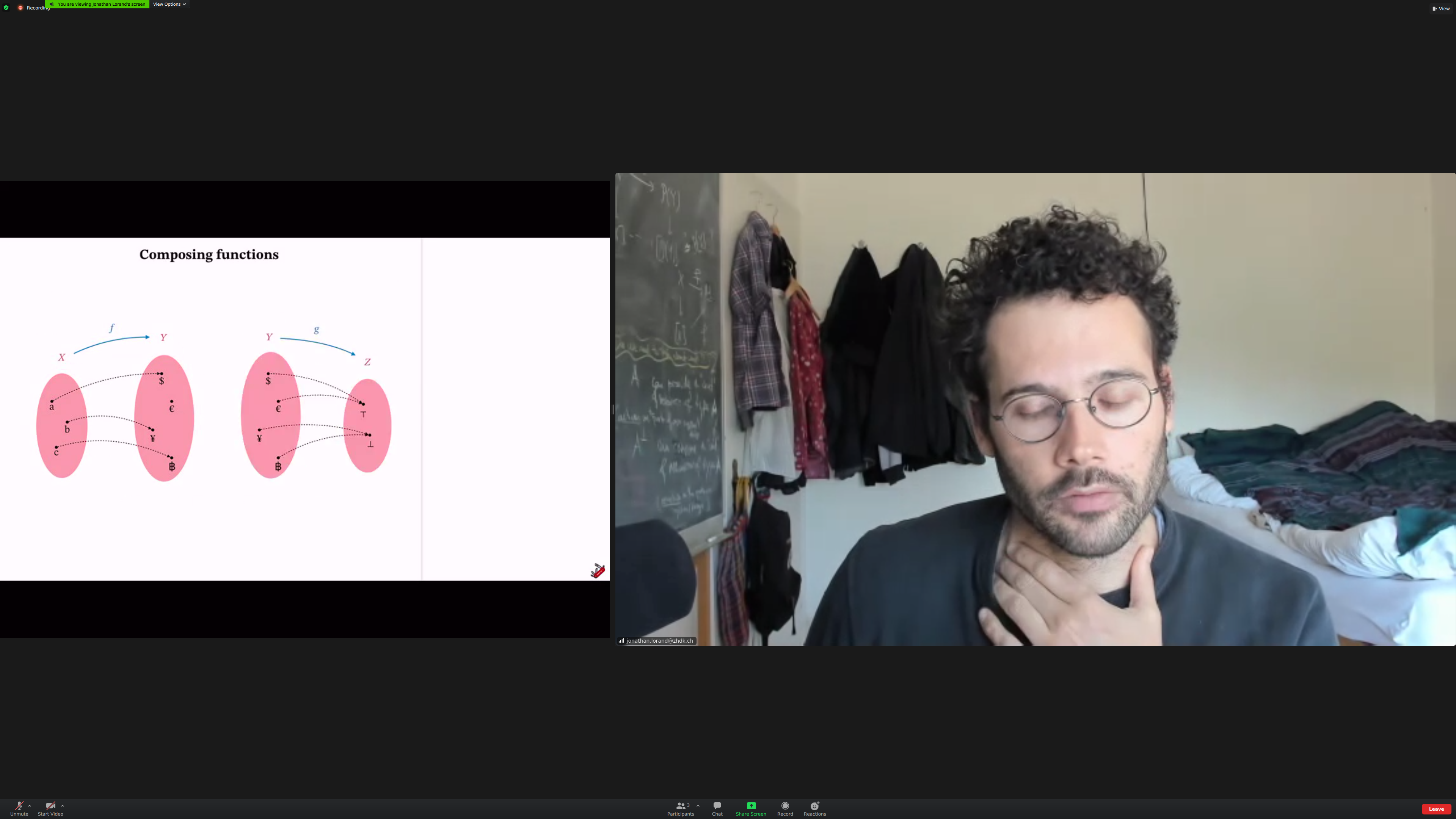
Aside: we should put this on youtube.
We'll be used 'then' notations for compositions, not traditional.
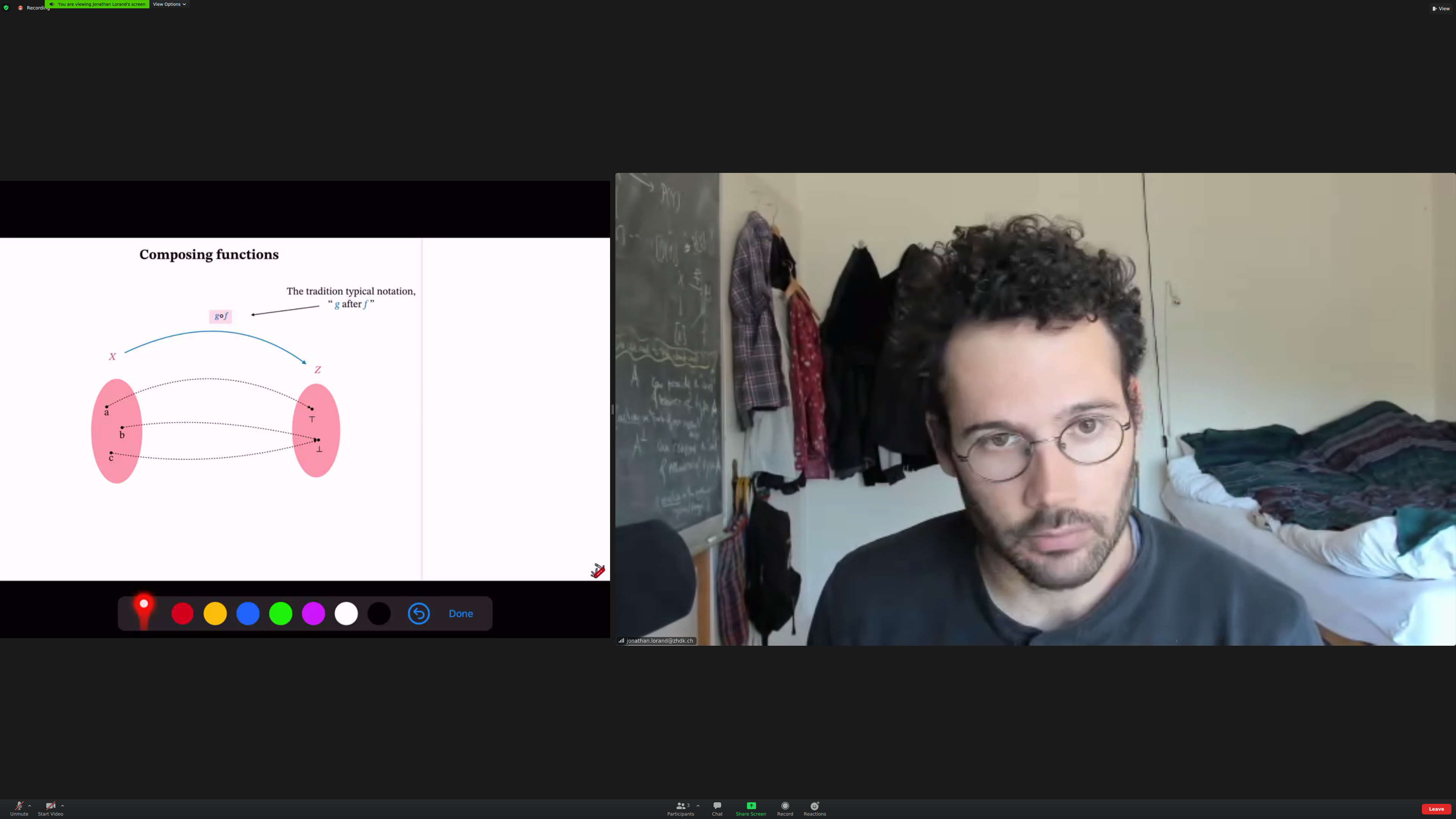
We'll relate [[objects]]. The things doing the relating are [[morphisms]].
(here there should be a better screenshot, I couldn't get it on time)
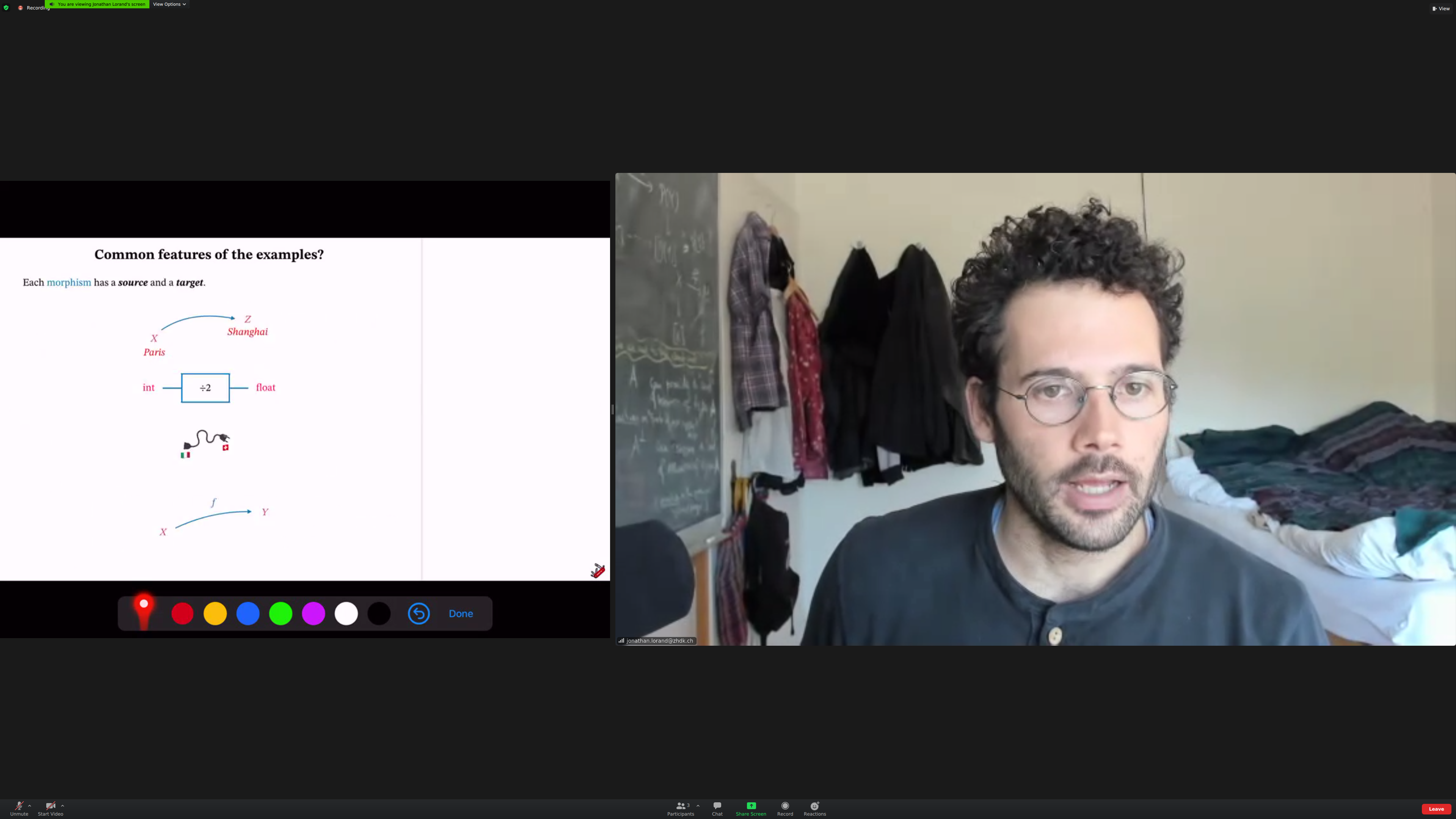
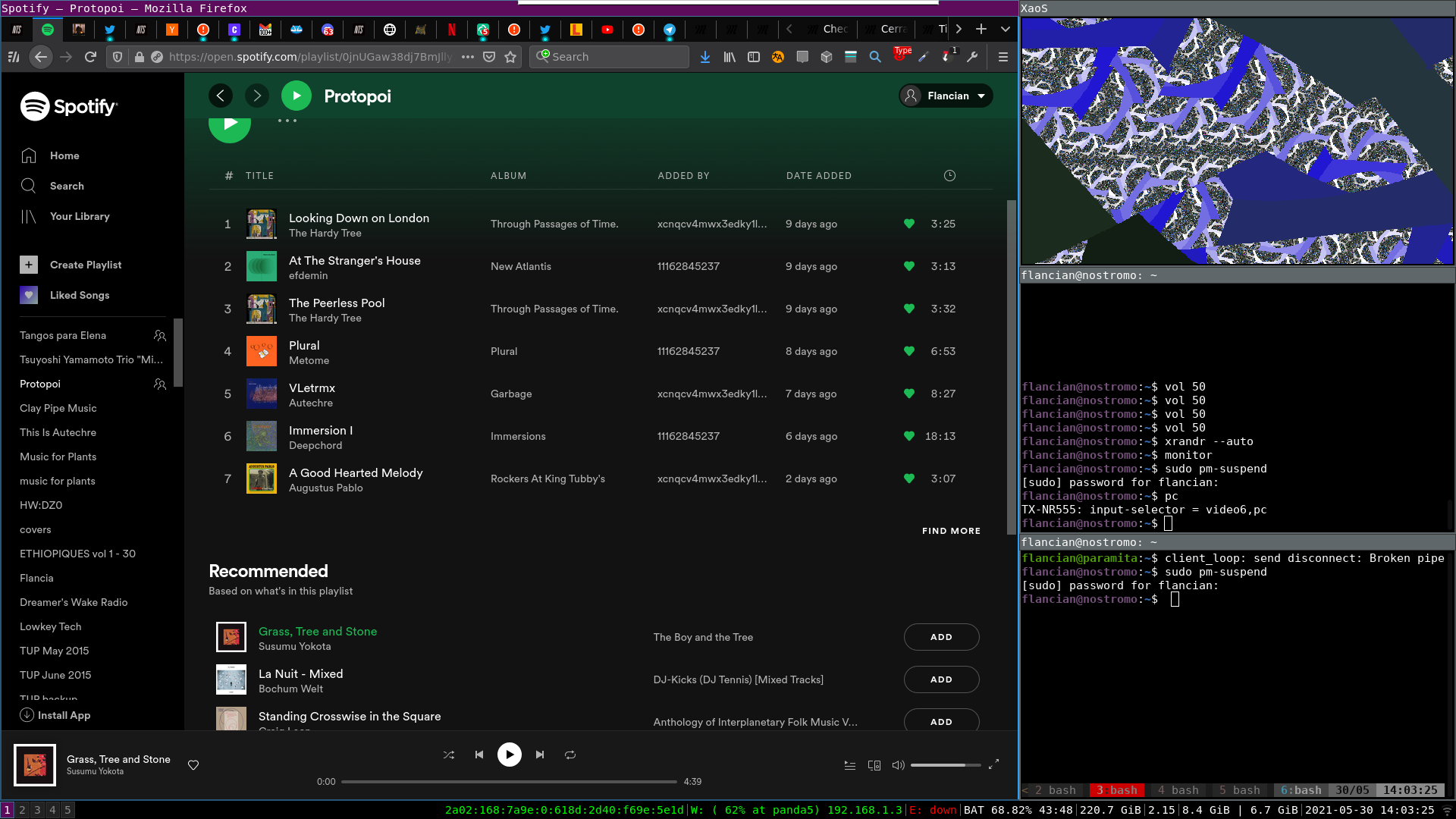
Each morphism has a [[source]] and a [[target]].
We can compose morphisms when the target of the first matches the source of the second.
Common feature of all examples: they are [[associative]]. The order of composition doesn't matter; the order of application may. (check)
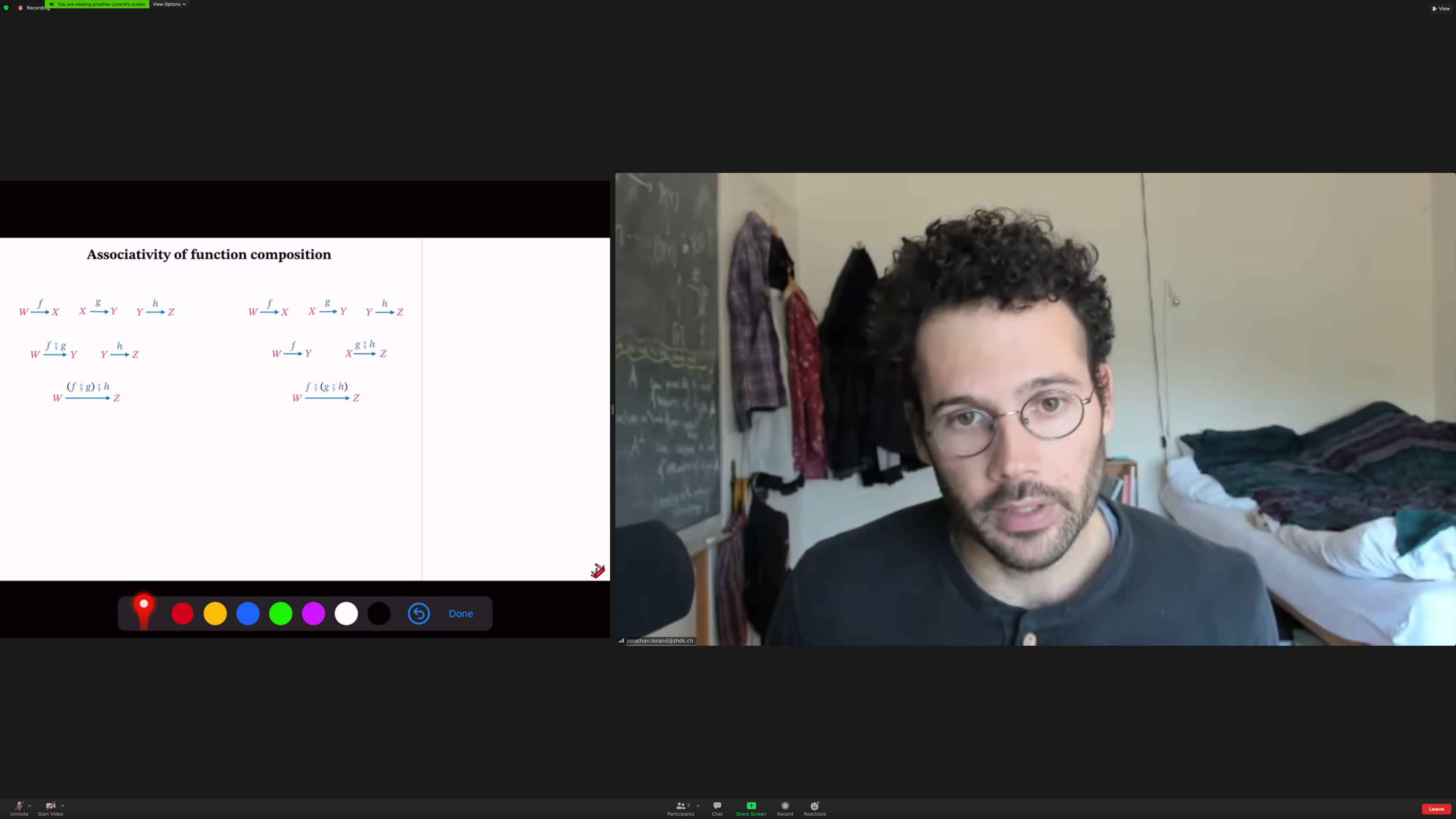
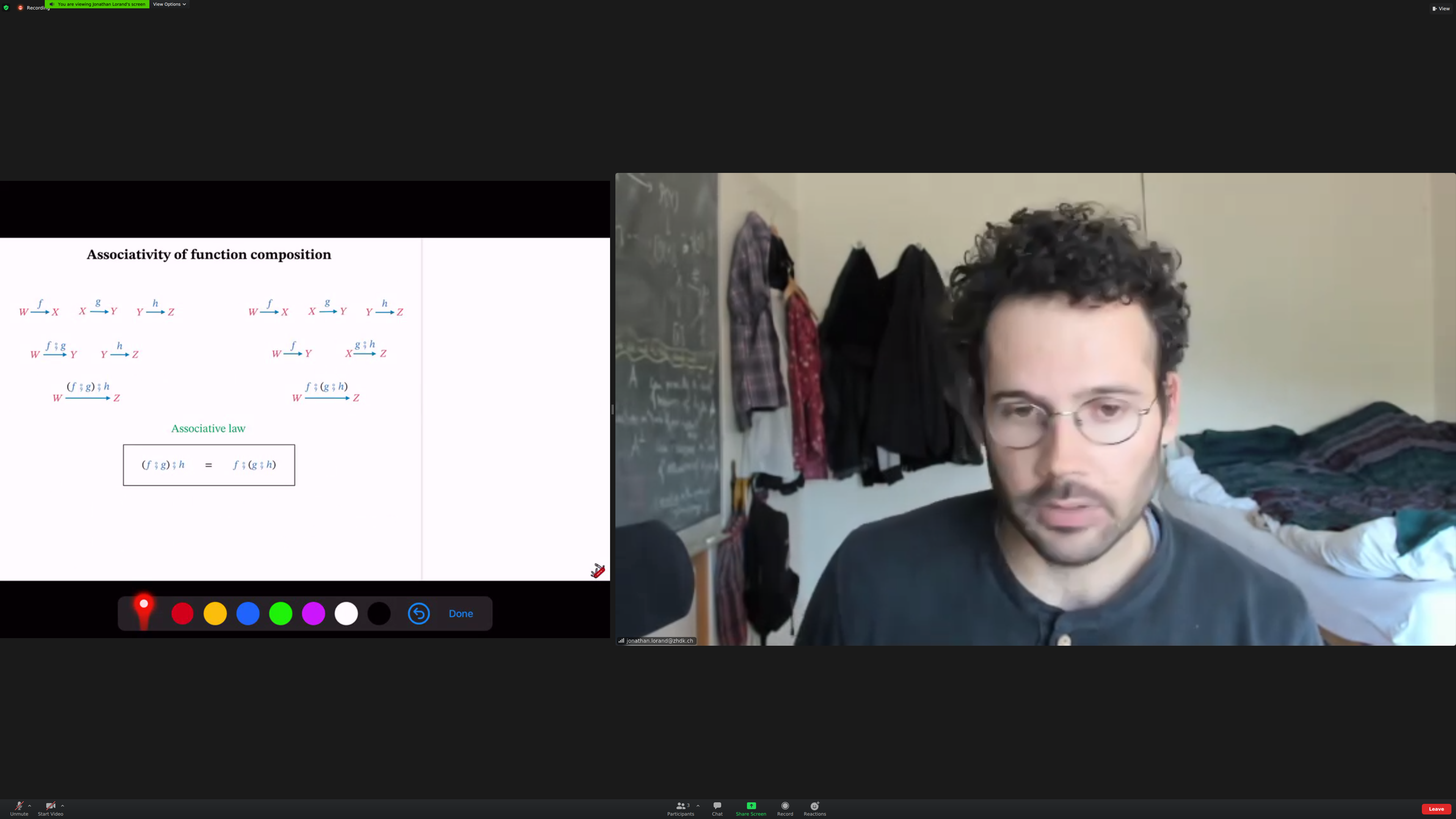
This was [[true]] for all the examples we looked at so far.
Associativity means that brackets are not needed.
Aside: going from a class in real time to screenshots is one morphism; going from screenshots to notes is another. Going from notes to a chapter or blog post is another.
Associativiy in plugs:
Identity morphisms: morphisms that do nothing. Like a zero in addition.
Identity morphism for functions: the identity function.
A converter that converts to the same electrical standard is just an extension that can become a converter of any type with one additional composition.
[[identity journeys]] (aside: I call these [[excursions]])
Mathematical notion of a category
Aside: I think most concepts had been introduced before except one?
"F is a morphism from X to Y":
Identity morphisms:
Composition:
Unitality: identity "works" (I think this was the concept I thought hadn't been defined previously):
The [[category of sets and functions]] plays a central role in category:
The [[category of plugs and chords]]:
The [[category of journeys]]:
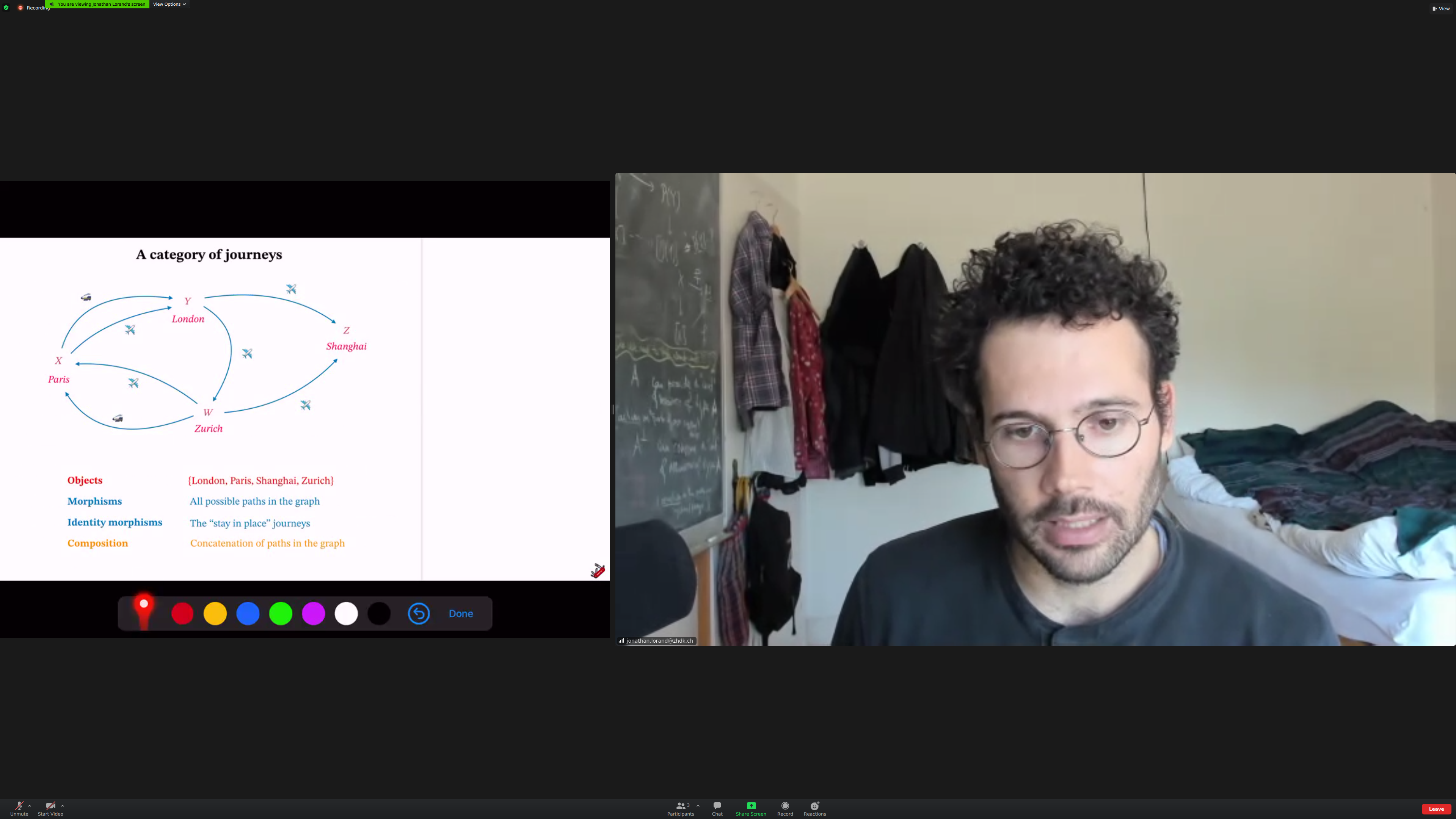
(Aside: some screenshots might be duplicate, they are likely from two moments that felt significant)
Any directed graph generates a category.
(Aside: a directed graph generates dependency trees.)
But categories are [[richer]] than [[directed graphs]], so they aren't used that much as such.
Category theory is interested in [[relations between morphisms]].
if f;g is equal to h, this diagram [[commutes]].
Aside: when you say 'if you compose' something, it'd be nice to have the right notation for the composition on screen.
Sameness: [[isomorphism]]. Identity is equal to roundtrip.
(in the category of sets/functions, an isomorphism is equivalent to a [[bijection]]. in the category of topological spaces and continuous maps, it is a [[homeomorphism]])
A context.
(Aside: I needed more time in this slide).
Contexts leads to [[universal constructions]] and [[universal properties]].
Example: [[categorical product]].
You start with objects, no morphisms. From the left diagram, you construct one with [[morphisms]]. In this one, we generalize cartesian product.
[[pushouts]] Using the information given by f and g, you [[integrate]] two objects (check).
Additional structures: [[monoidal products]]. A way to compose objects and morphisms "in parallel".
(Aside: it would be nice to have original and post application of composition side by side or top to bottom).
(Aside: missing screenshot here, find in Pictures)
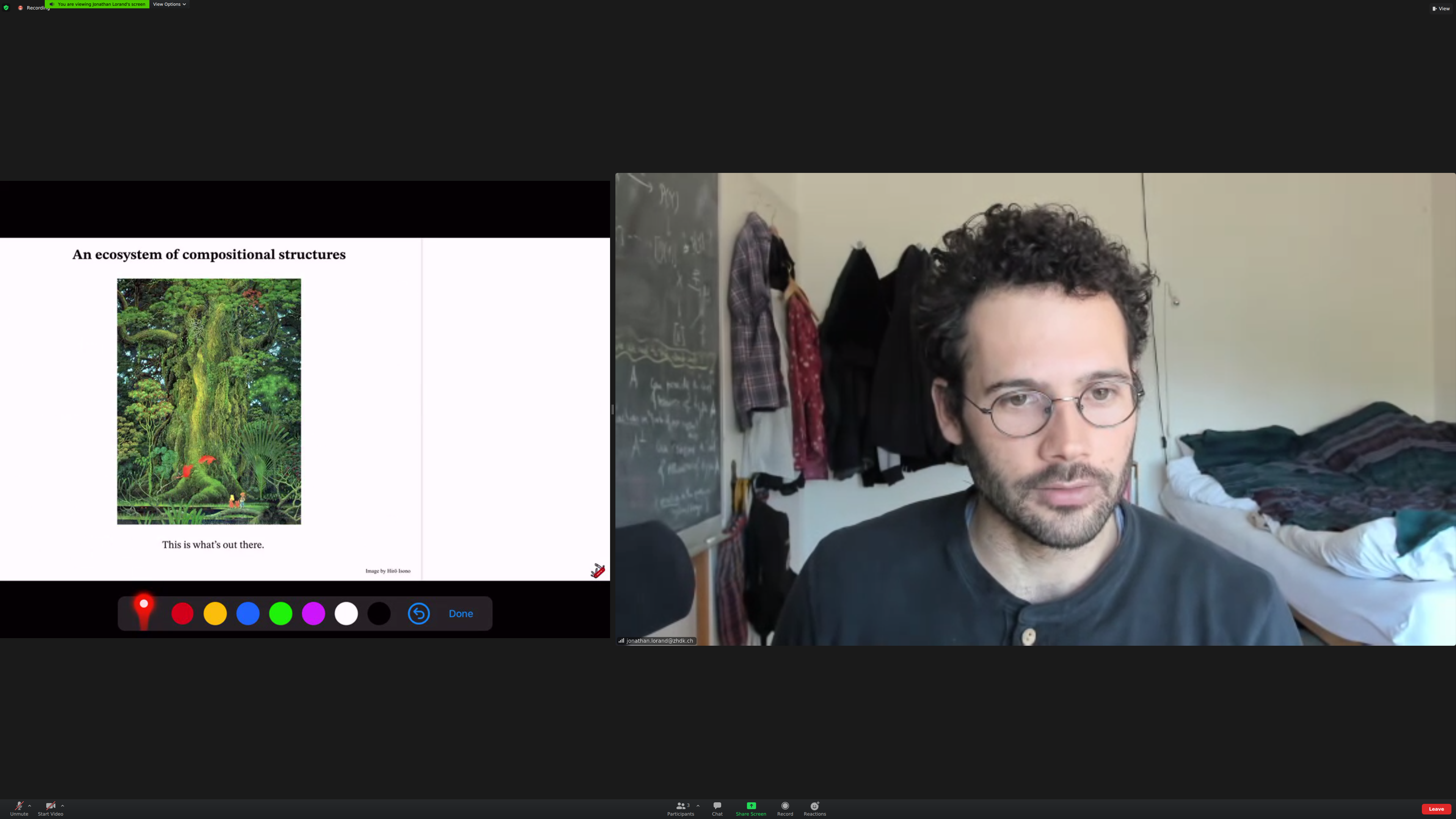
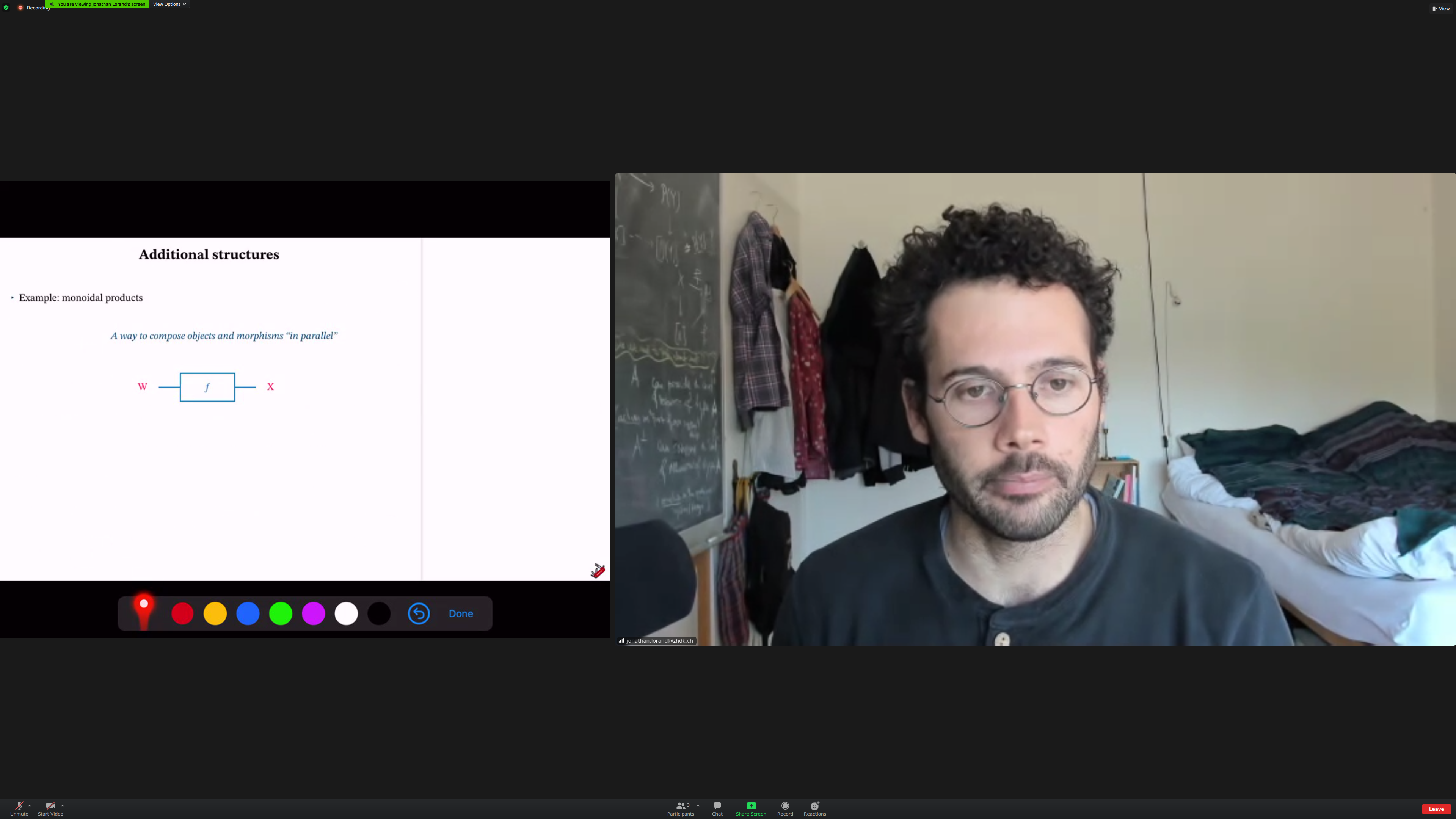
- public document at doc.anagora.org/category-theory-basics
- video call at meet.jit.si/category-theory-basics
